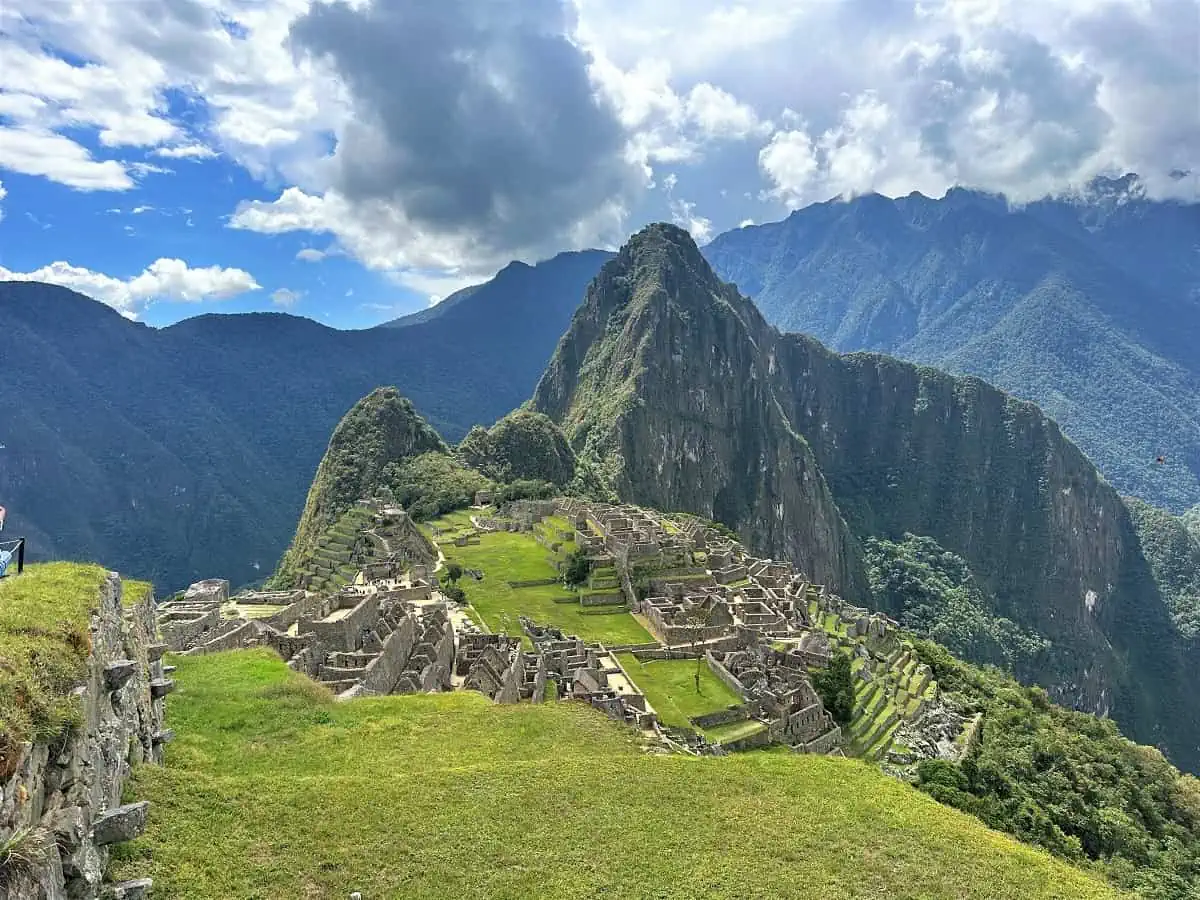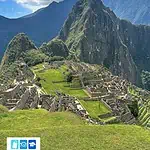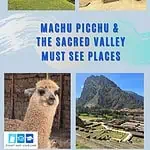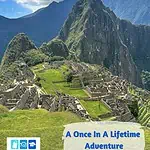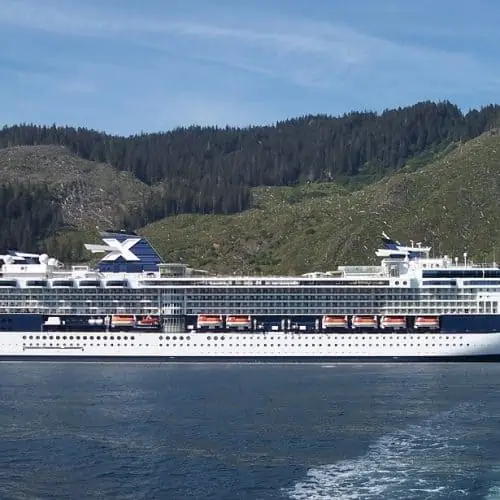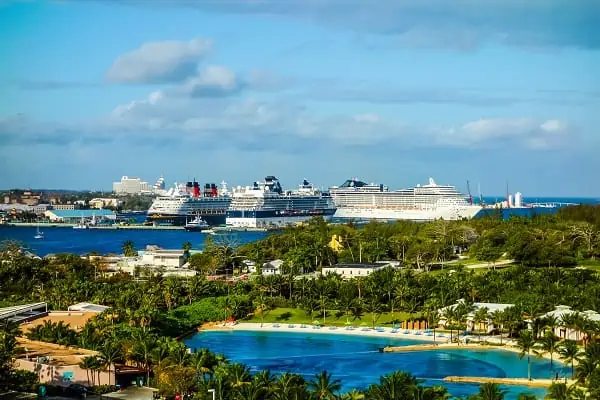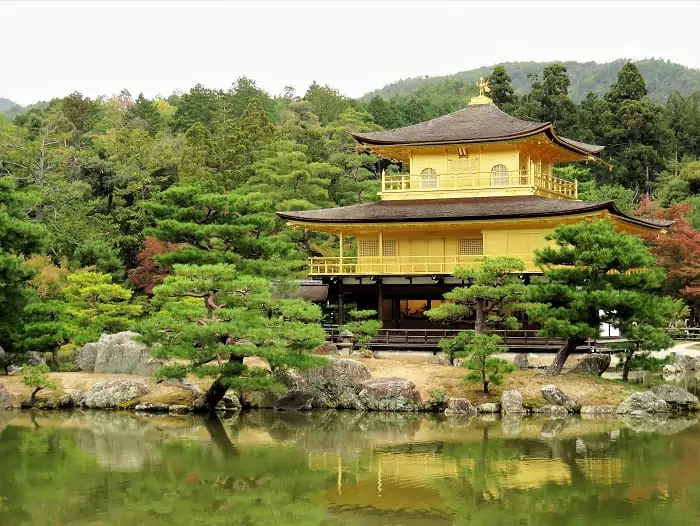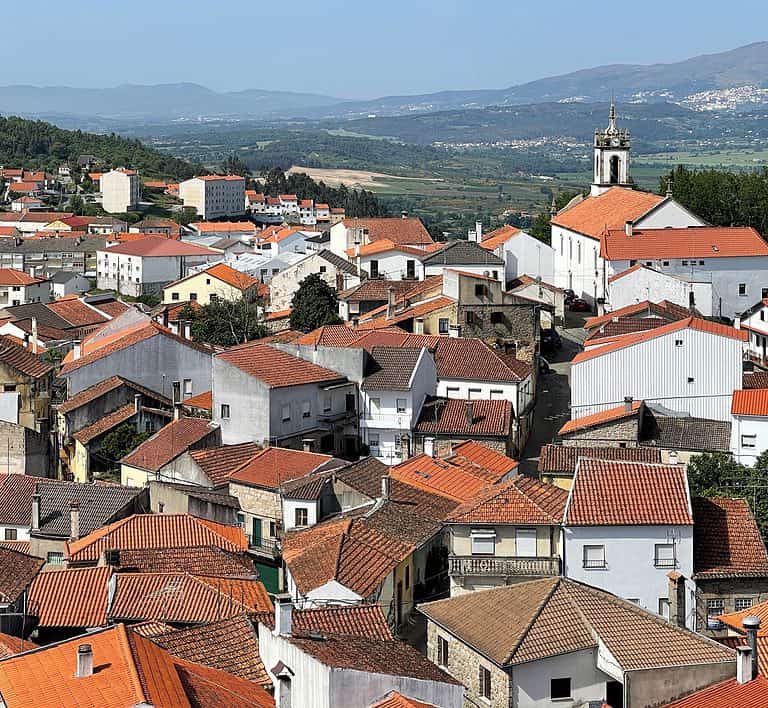The Best Tour Of The Sacred Valley And Machu Picchu
Touring the Sacred Valley and Machu Picchu in Peru is an unforgettable experience. Your travels combine breathtaking landscapes, ancient ruins, and rich cultural heritage. For many people, this is a bucket list trip. I know it was for us.
Because this is generally a once-in-a-lifetime trip, take your time to plan it well. Many times Machu Picchu is combined with travel to the Galapagos. If you are coming from North America or Europe, flying once and seeing these two iconic world heritage sites on the same trip makes sense.
A note to my readers and friends. DH and I chose to do the Galapagos and Machu Picchu as a package tour through Celebrity Cruises. This was an all-inclusive, high-end tour.
However, throughout this article, I am sharing information such as booking hotels, where to get guides and tickets for the archaeological sites, and transportation around Peru. You don’t need to spend a lot of money. In fact, Peru is traveler-friendly, and you will find accommodation options that range from extremely economical to luxurious.
No matter your price point, many logistics must be organized (planes, boats, busses, hotels, etc.) to ensure you have the best tour of the Sacred Valley and Machu Picchu. I hope that having a look at our trip will help you plan your journey through these awe-inspiring destinations:
This article may contain affiliate links. We may earn a commission if you use these links to buy products or services. Please see our disclosure policy for full details. Thanks.
Getting To Lima, Peru: The Starting Point For The Sacred Valley And Machu Picchu
Most major airlines have daily flights to Lima’s Jorge Chavez International Airport. United, American, Delta, and Jet Blue fly from the US, but none have direct flights; you will have a connection somewhere along the route. Flights from the east coast may route passengers through Atlanta, and from the west coast, Houston is typical. Flight time is around 13 hours from San Francisco and about the same from the east coast.
Because of the long flight time, most people plan to stay overnight in Lima and continue to Cusco the next day. However, some flights will take you directly to Cusco via Lima. Depending on connections, these flights range from around 17 hours to close to 24.
We were already in South America, having just completed a week-long Galapagos cruise. Of the folks on the cruise (89), 24 of us are going on to the Sacred Valley and Machu Picchu. On the Galapagos’ final day, we fly Latam Airlines, via Quito, Ecuador, to Lima, Peru. These flights take most of the day, and we finally arrive at our hotel in Lima late that evening.
Lima To Cusco To The Sacred Valley
We are up early for our flight to Alejandro Velasco Astete International Airport in Cusco (note there is an alternate spelling Cuzco)the next day. If you stay in the central part of Lima as we did, you will have a longish drive to and from the airport.
Not necessarily because of the distance, but the traffic in Lima is very congested. Expect the drive to take between 30 and 45 minutes. Our flight has a 9:40 departure time, so we head out from the hotel at 7:00 am.
The most common way to get to and from the airport is using a Lima Airport Taxi, which will cost around $18.00 US. The currency in Peru is called “Soles,” and the conversion rate when we traveled was about 3.5 soles to the dollar. Uber is also available in Lima and is competitively priced.
I am fortunate to have a window seat on the flight. The landing pattern in Cusco is fascinating to watch. I don’t know if it is the altitude or the weather, but the clouds in the sky look almost unreal.
The altitude of Cusco is 3,399 meters or 11,152 feet. This is the highest altitude you will be at during the trip. Machu Picchu ( 2,429 meters or 7,970 feet) and the Sacred Valley (2,792 meters or 9,160 feet) are at slightly lower elevations. If you stay in Cusco for a day or so before traveling on, it will give you some time to acclimate to the region’s high altitude.
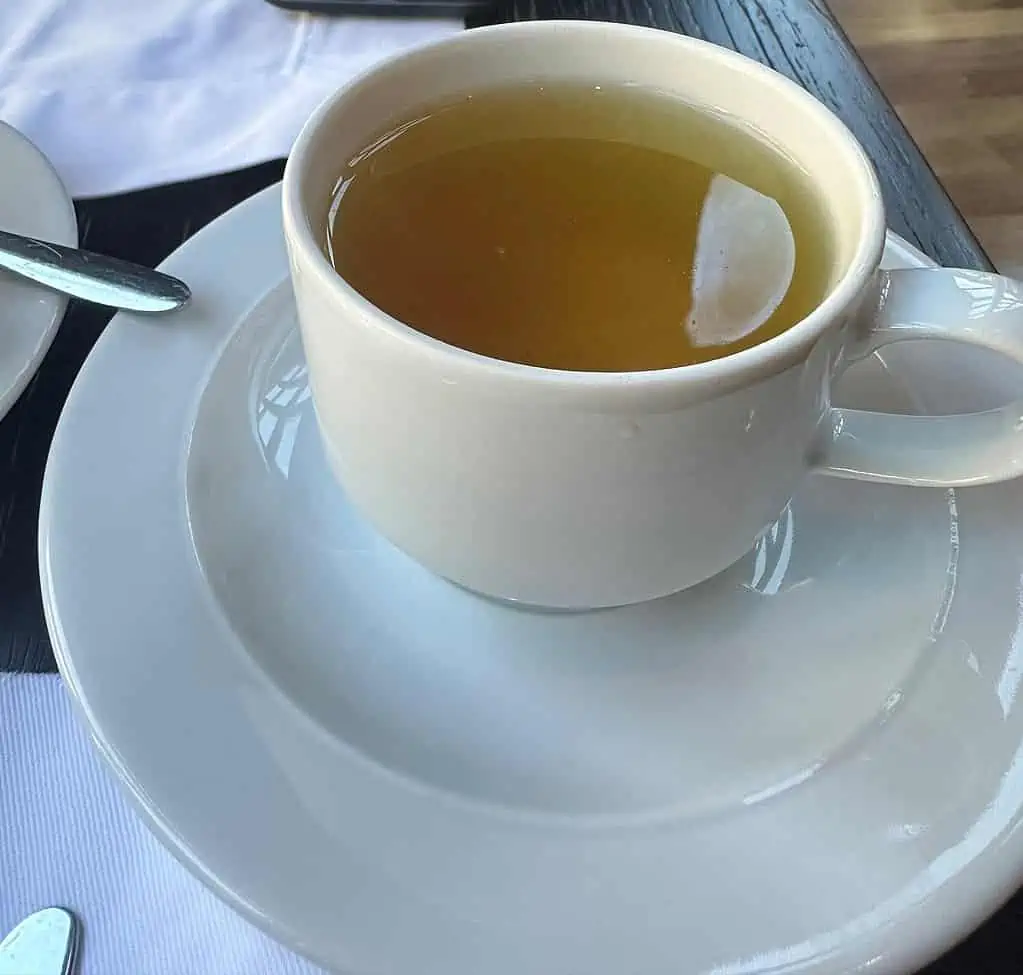
Many people are concerned about altitude sickness and get medication from their doctors before traveling to high-altitude locations. We chose not to use prescription drugs but did partake of the coca tea you can readily find in Peru. This tea is from the same plant that cocaine is derived from, but the tea is mild, and you should not notice any effect. The tea tastes like green tea, with a mild herbal or grassy flavor.
On To The Sacred Valley Of The Incas
We are not staying in Cusco but in the Sacred Valley of the Incas and have a minibus to take our group along the narrow winding highway. The drive will take 1 to 2 hours due to the roads. You can also take the train PeruRail bus/train combo from Cusco to Ollantaytambo and Machu Picchu Pueblo (aka Aguas Calientes). The prices for the train range from $60 to $105 US per person one-way.
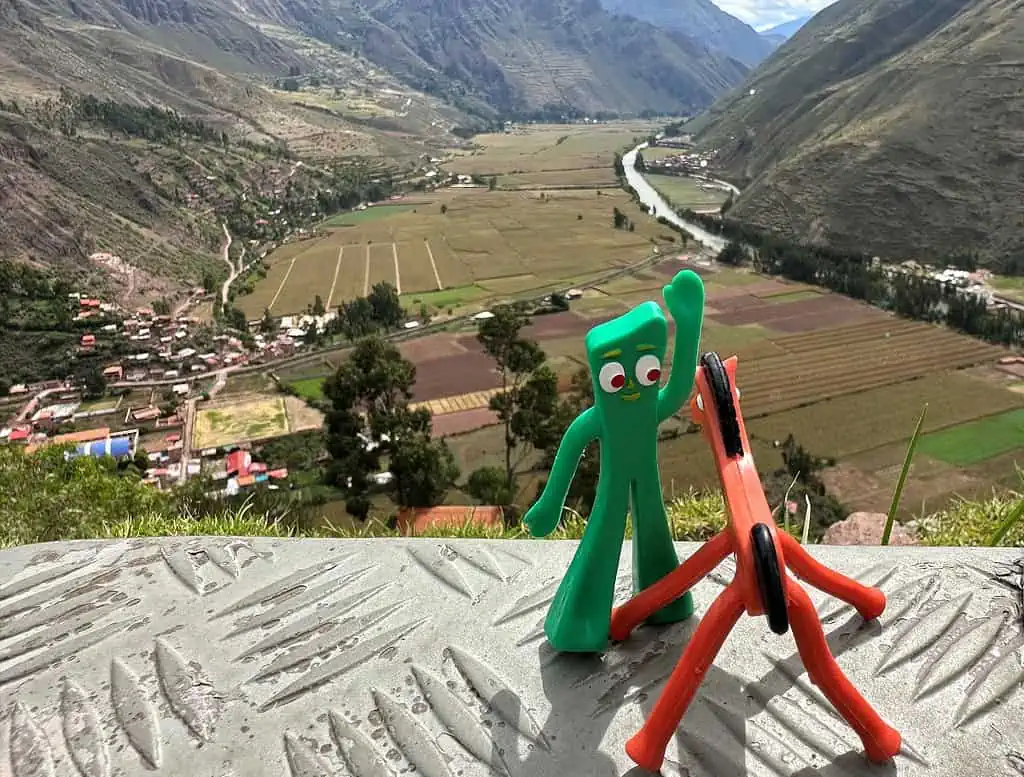
We stop for lunch at the beautiful Hacienda Huayoccari. The Lambarri Orihuela family have been landowners in the Sacred Valley since the 18th century. The Hacienda is now a museum dedicated to a pre-Hispanic, colonial, and folk art collection. In addition to sharing this art with its visitors, the restaurant provides authentic Peruvian food and the opportunity to enjoy the beautifully maintained gardens.

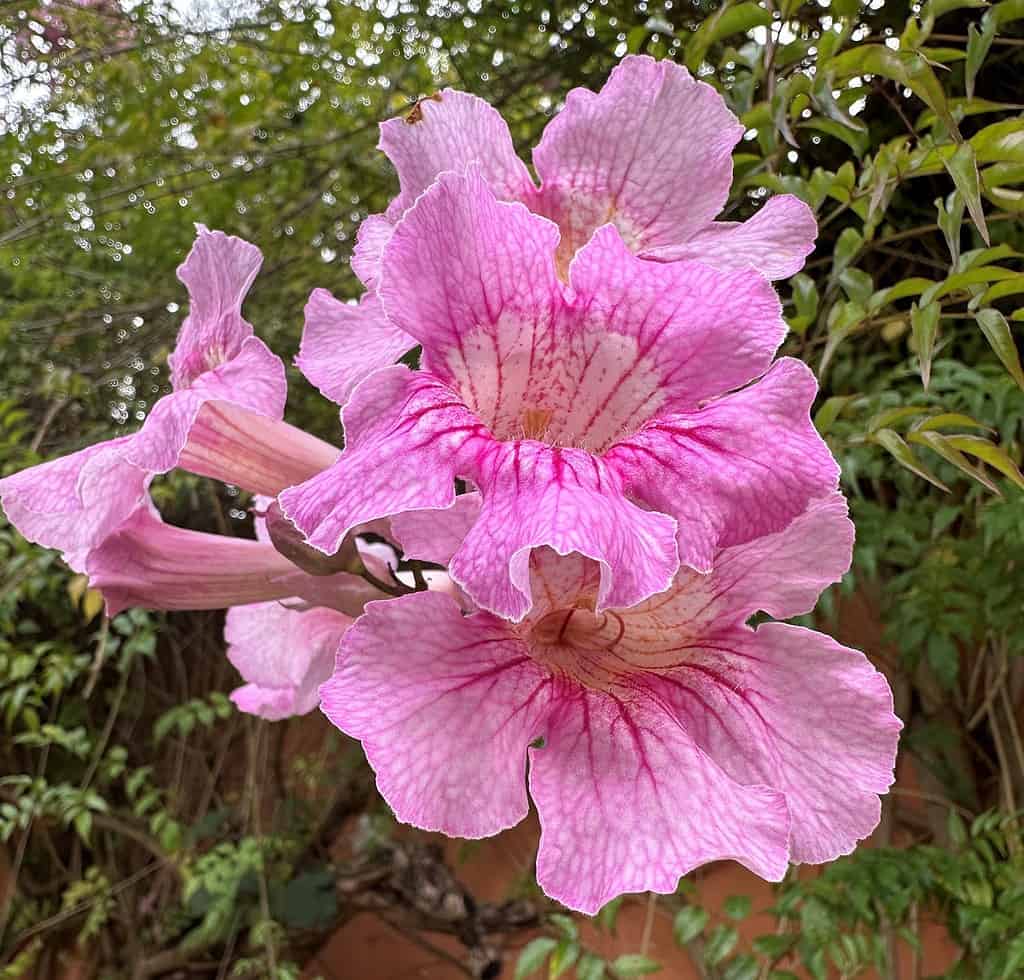
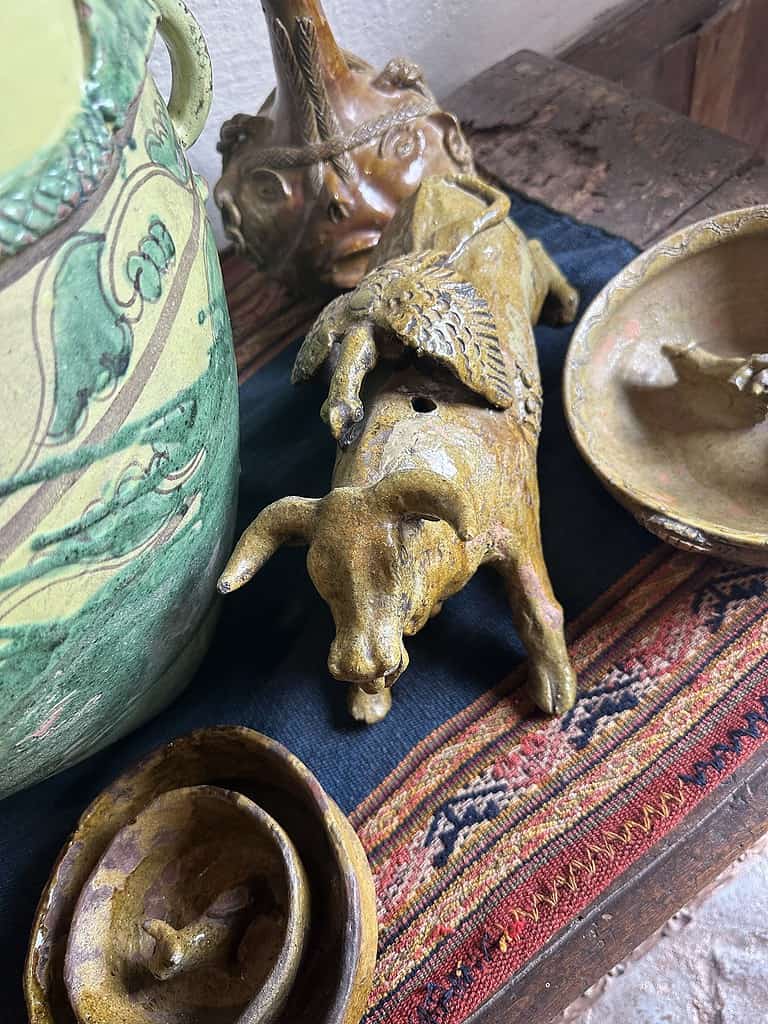
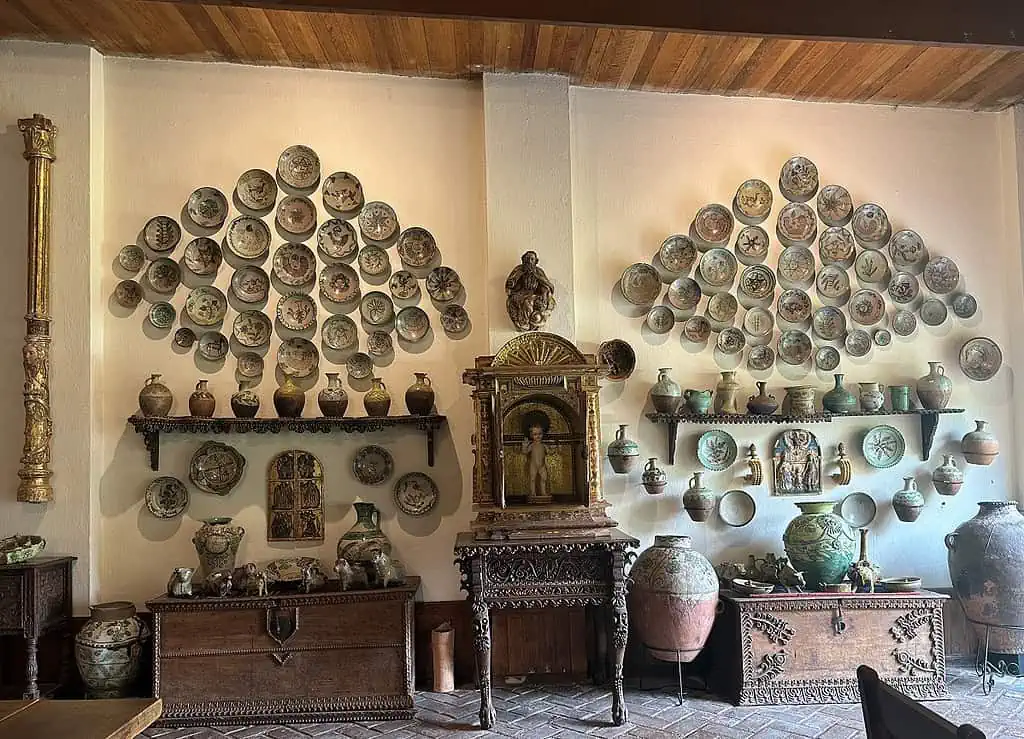
After lunch, we continue to our hotel in the Sacred Valley, Tambo del Inka in Urubamba, Peru. This will be our base for our time in Ollantaytambo and Machu Picchu.
We complete registration, go to our room to settle in and freshen up, then walk around the grounds. At seven this evening, there is an orientation meeting. Here we meet the guides, Miguel and Juan Carlos, who will be with us through the archeological wonders this week.
To be an official guide, individuals must have a university degree in tourism and a valid certificate issued by the National College of Tourism. There is conflicting information about whether you must have a guide for Ollantaytambo or Machu Picchu required. But neither site has interpretative signs along the trails or identifying the buildings. You can go through the entire park and miss the one thing you hoped to see. This is why a guide is recommended.
Our First Full-Day Tour Of The Sacred Valley And Machu Picchu – Ollantaytambo
Ollantaytambo is a modern-day village and the 600-year-old capital of the Incas. You can purchase a Cusco Tourist Ticket, commonly called B.T.C., when you arrive at the entrance to the archaeological site. This ticket is an excellent way to cover the cost of admission to many archeological sites and museums around Cusco and the Sacred Valley. The tickets can be purchased at the first site you visit. But note they cannot be purchased online at this time.
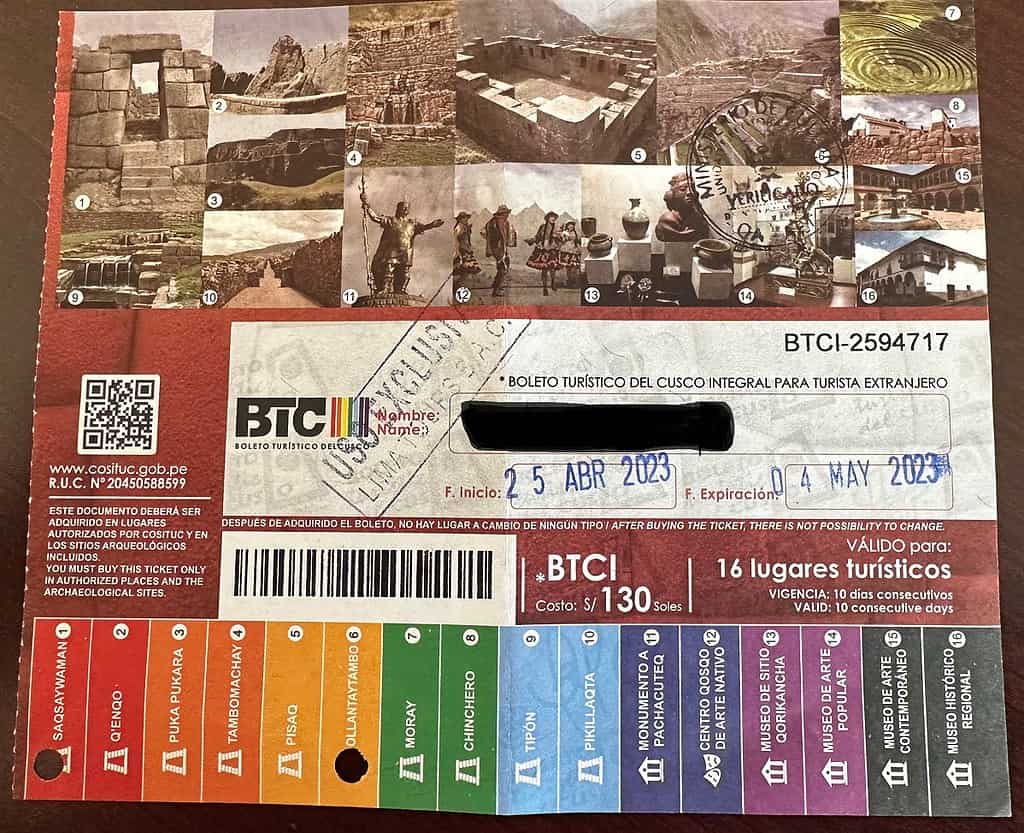
Different tourist ticket types are available depending on what sites you want to see. We got the “Integral Tourist Ticket,” which cost 130 Soles (around USD 38). This ticket allows its holder access to 16 different sites for 10 days. There are less expensive tickets that offer fewer sites and less time.
Many street vendors are around Ollantaytambo offering their goods. This is where we first meet “Kevin Costner.” What? Many of these vendors have taken on “celebrity” names to stand out. Kevin sells jewelry. We don’t know it yet, but we’ll be seeing him again.
A walking stick is handy for the hikes we will do today and later in Machu Picchu, and this is a purchase I planned to make. It doesn’t matter who you buy from; everyone charges the same $10 US. I won’t take this stick home, so some fortunate soul will inherit this when I leave Machu Picchu.
Ollantaytambo – Pachacuti’s Royal Estate
It’s said that in the mid-15th century, the Incan emperor Pachacuti conquered Ollantaytambo. The town was rebuilt with extensive terracing and irrigation to provide lodging for the Inca nobility. Later the site served as a stronghold for Manco Inca, the leader of the Inca resistance against the Spanish.
Archaeologists now believe that Machu Picchu was also one of Pachacuti’s estates. So what we learn on our visit to Ollantaytambo will give us insight into the building of and life at Machu Picchu.
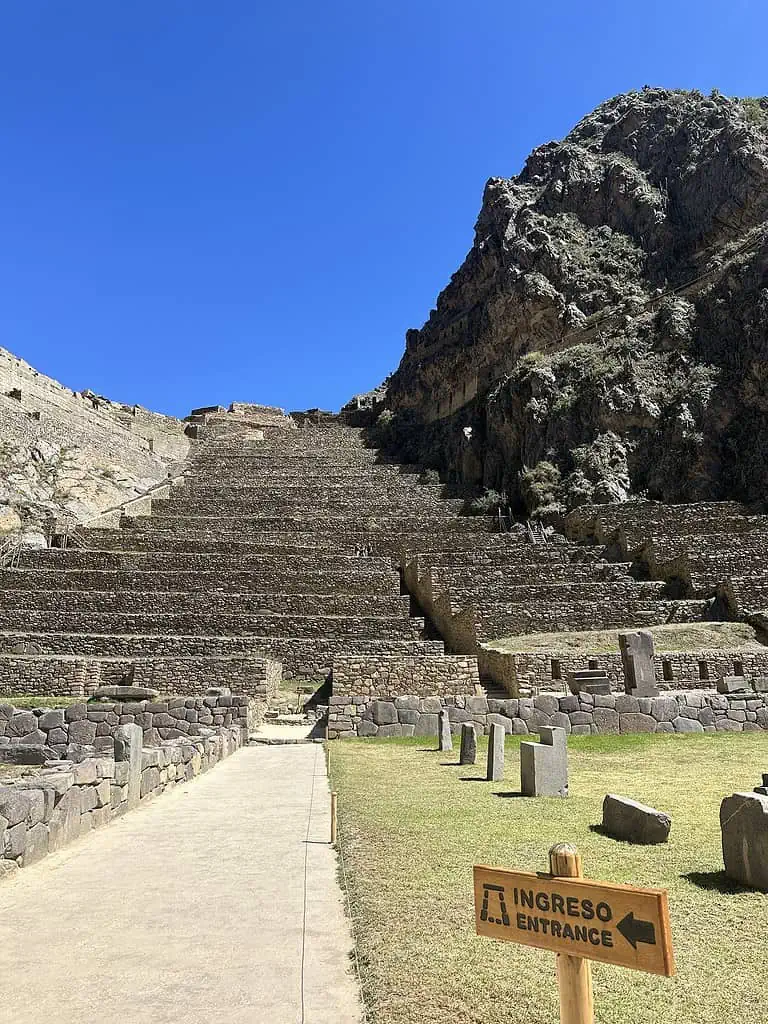
The guided tour through the archaeological site of Ollantaytambo is said to be more strenuous than Machu Picchu. Here our guides split up. Miguel tours us through the ruins, up to the top, and back down again. For those unable to make the entire tour, JC conducts a tour of the lower levels of the estate.
At the entrance to the ruins, the terraces and stone stairs we’d be climbing didn’t look as large as they were. Then at a rest stop after passing our second or third terrace and climbing stairs that felt maybe 2 feet high, we had a chance to look back. This was when I realized how enormous Pachacuti’s Estate is … and that we were only about 1/4 of the way into our hike.
Miguel is a considerate and professional guide. Remember, we are still around 9,000 feet above sea level. At this stop, Miguel offers a botanical mixture made by a local shop in the Valley. He sprays the product on our hands and tells us to inhale deeply, which will help open our sinuses and lungs.
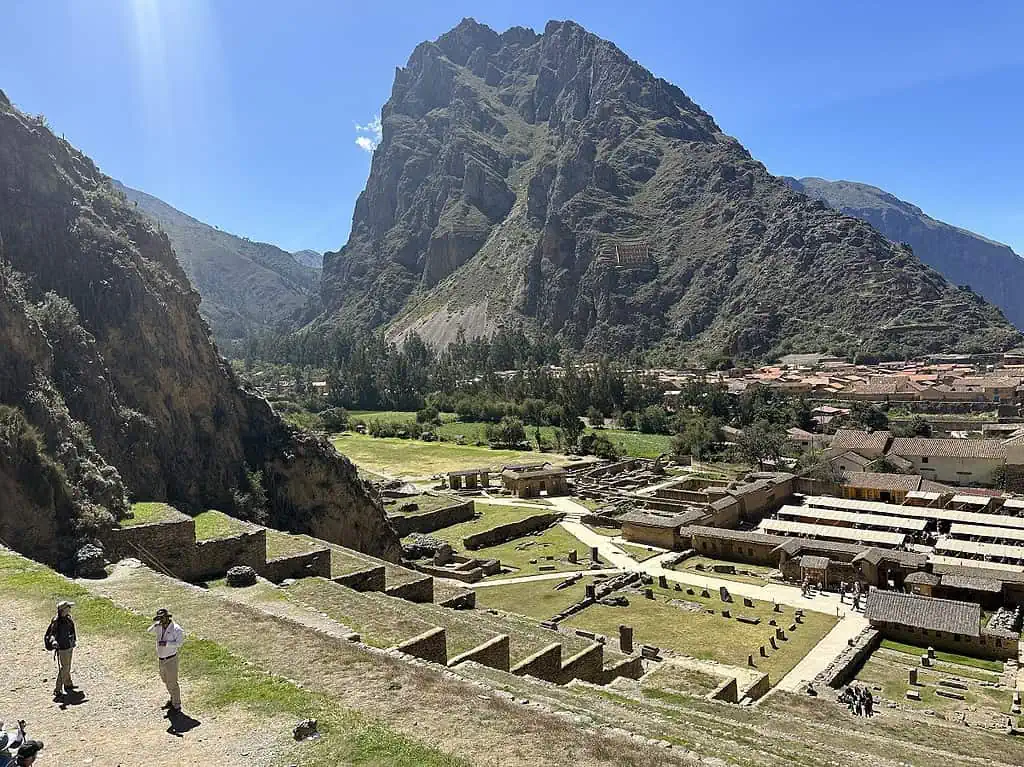
Let me explain before you start thinking we are now inhaling coca tea. The spray, Muna, is made with the essential oils of Rosemary, Cypress, Mint, and Anise. It is made and sold locally by “begonies botanicals” in Urubamba. We bought some and brought it home with us. It works well for clearing your sinuses during hay fever season as well!
As we continue the hike, Miguel shows us how the stones for the walls and the stairs were cut and dry-fitted together. Some of the stones are so large it’s hard to imagine they were brought to the site without heavy machinery.
Finally, the group reaches the highest point of the ruins, a small plateau with a massive stone that is thought to be the Sun Temple. The group gets a bit silly here and does one of those funny panorama shots to show we made it to the top. Now we just have to get back down.

The trail through Ollantaytambo is horseshoe-shaped. We finished the first half and are walking along a reasonably flat trail on the upper end of the ruins. Miguel points out many other ruins on neighboring mountains used for grain storage and housing.
Finally, we start our descent back to the valley floor. While going down is certainly easier on the lungs, it’s killer on the knees and thighs. By the time we exited the ruins, my legs felt like rubber.
Back in the modern-day Ollantaytambo, we take the opportunity to refresh our water and walk through some of the town’s galleries and shops.
Lunch and Peruvian Paso Horse Show At Wayra Ranch
All this climbing has given us quite an appetite, and we head over to Wayra Ranch for lunch and a chance to see a performance of the unique Peruvian Paso Horses. Our lunch, served al-fresco on the hotel’s patio, is a traditional family-style Peruvian ranch cookout. There are empanadas, pork, chicken, beef, veggies, and salads of all flavors.
As we finish our meal, the riders in striking Peruvian costumes and horses enter the paddock. Peruvian Paso horses are unique to Peru and have a distinct, smooth, four-beat, lateral gait called the Paso llano. This reminds me of Icelandic horses we spent time with at Fridheimar in Iceland and their gait, the tolt.
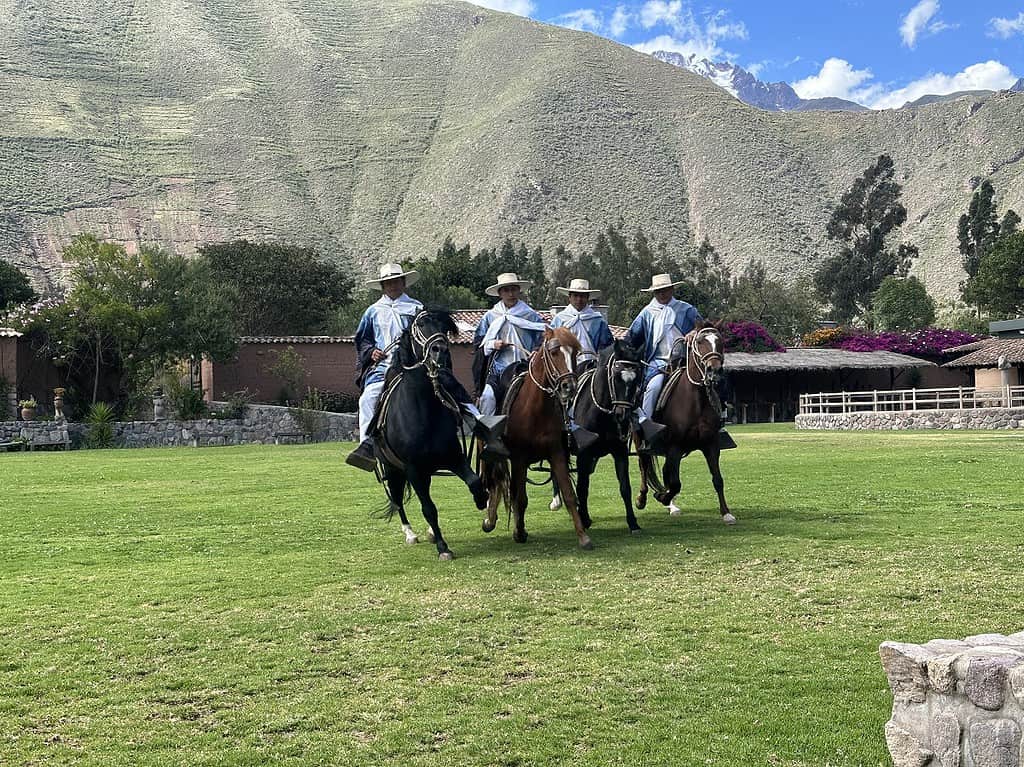
The horses and their riders move through the field in a beautifully choreographed dance. This performance is designed to show the capabilities of both rider and horse and does so beautifully.
Pablo Seminario Pottery Studio
One last stop for the day is the Pablo Seminario Pottery Studio in Urubamba. Pablo Seminario studied architecture and sculpture in Lima, Peru, where he also worked as an architect. In 1979 Pablo moved to Cusco and met his life partner Marilu Behar with whom he started this ceramic art studio.
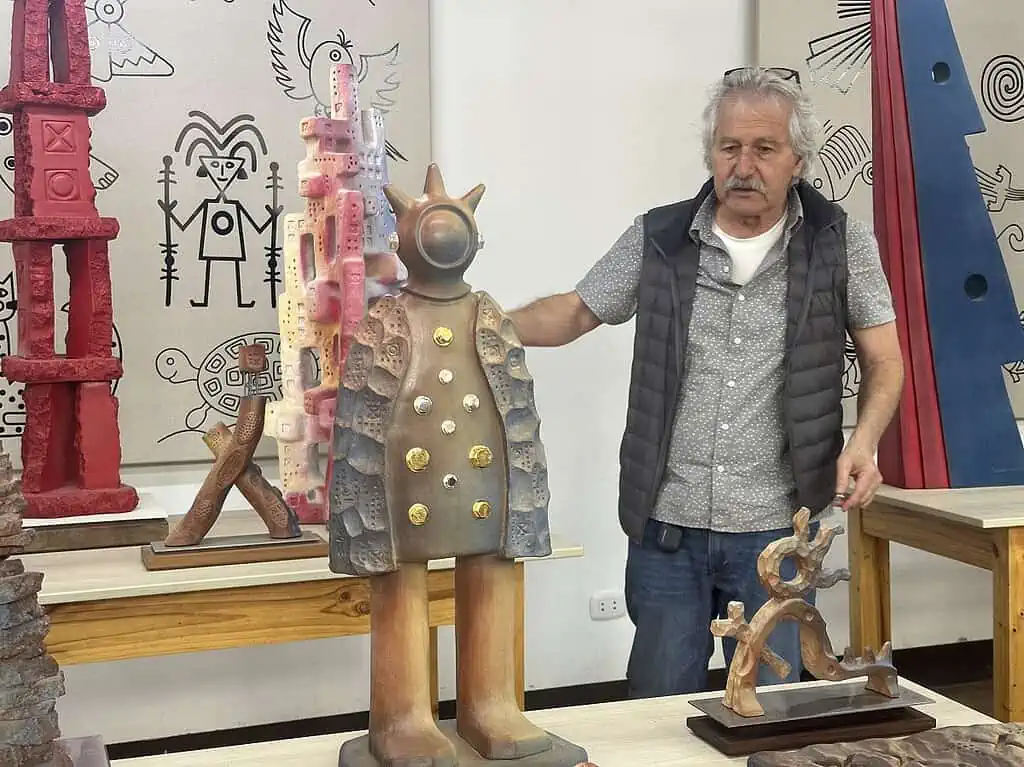
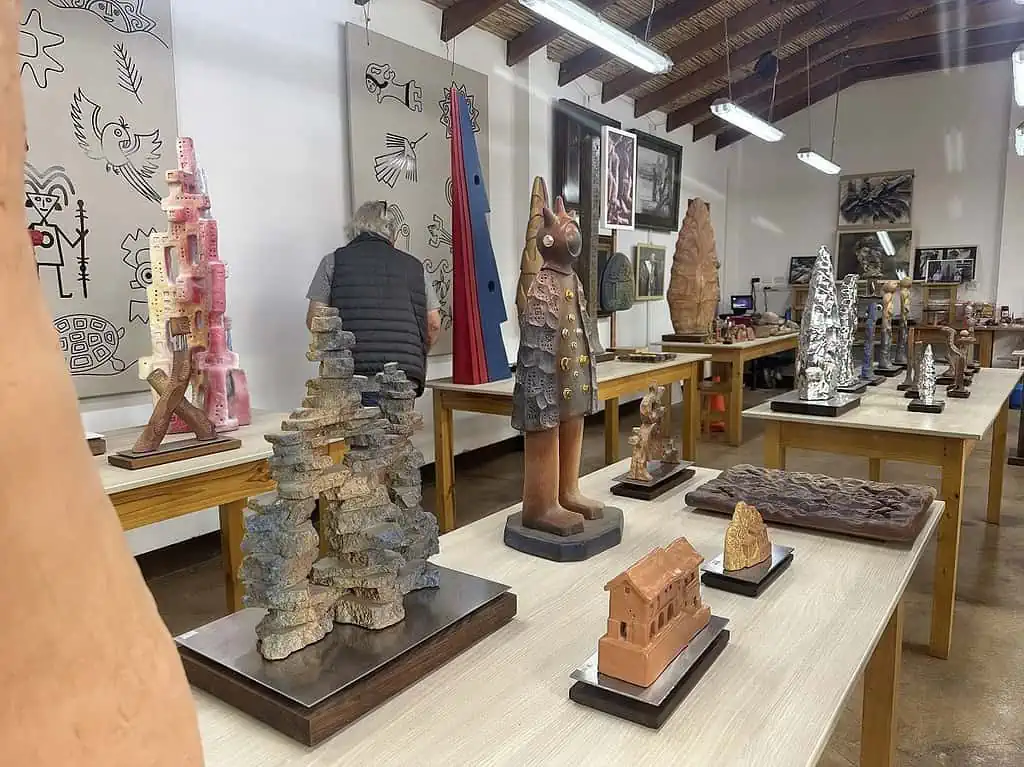
Mr. Seminario’s work has received numerous awards, and his art can be found in the Field Museum of Chicago and the Smithsonian National Museum of the American Indian. After a tour of the studio, we met Mr. Seminario, and he gave us a brief talk about his work.
Arriving back at the hotel around 5 pm, I feel the effects of the hike on my legs. We stopped by the spa to see if there was a chance of getting a massage, but they were all booked. Fortunately, our room sports a large bathtub, and I get in a good soak before dinner.
Some of our group head into town for drinks and food. But we opt to eat at the hotel, delicious as usual, and get to sleep early. We have an early departure for Machu Picchu the next morning (7 am).
The Day We’ve All Been Waiting For – The Ancient City Of Machu Picchu
Since re-opening Machu Picchu after COVID-19, many new regulations have been implemented to enhance the preservation of this Unesco World Heritage site. These new regulations have significantly reduced the number of tourists entering the site daily. Down from about 9,000 to just 4,500. You may hear different numbers, and you may be quoted different regulations. It seems this is all in flux right now.
Another regulation is that tourists must have a tour guide and follow one of four circuits through the park. If you haven’t arranged for a guide before getting to the archeological site, there are guides for hire at the entrance. The cost for a guide is around $15 US per person.
You must buy your Machu Picchu tickets before you get there. The Ministry of Culture has a website set up for this. As of Summer 2023, entry tickets for Circuits 1 – 4 cost S/152.00 or about $42.00 US. If you want to hike Huayna Picchu Mountain, Wayna Picchu Mountain, Machu Picchu Mountain, the Inca Bridge, and the Citadel, add about S/50.00 or $14.00 US.
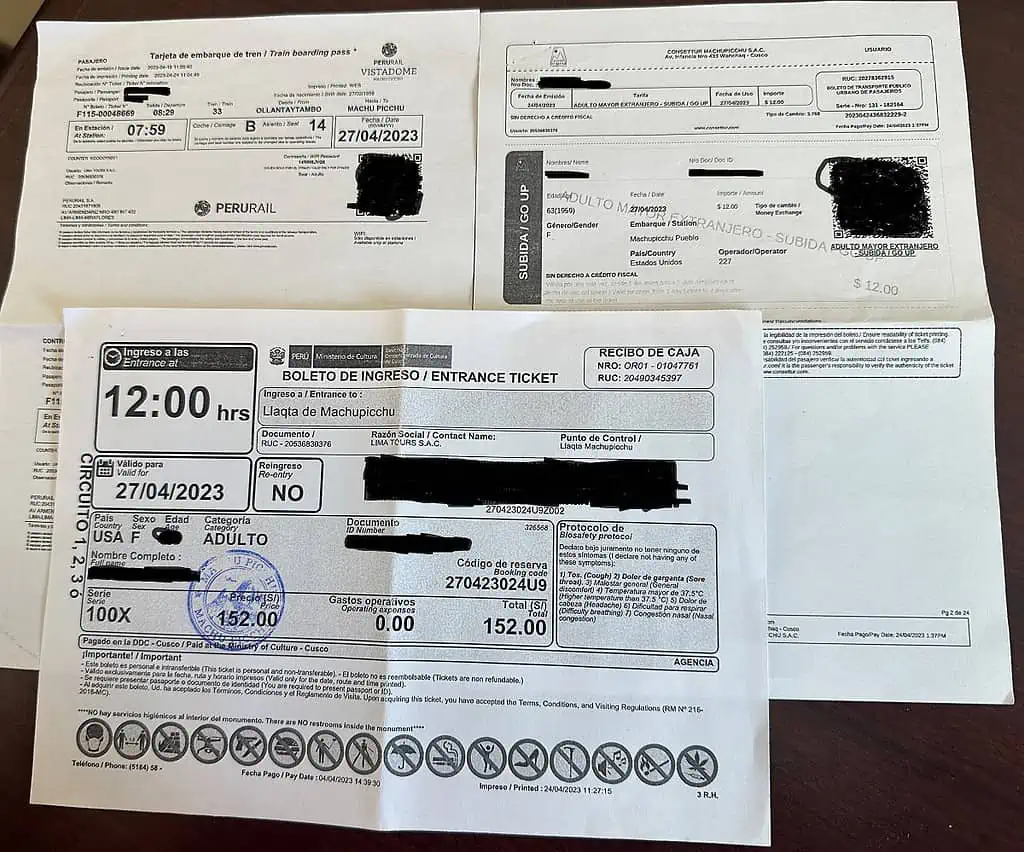
Entry dates and times sell out far in advance. If, for some reason, you choose to go on a whim, I’ve heard there are 1,000 tickets at the office in Aguas Calientes available for next-day use. Do pay attention to the arrival time on your reservation. You can only enter the park for up to one hour after your reservation time.
There are generally two parts to getting to Machu Picchu. A train trip from Cusco, or Ollantaytambo, to the town of Aguas Calientes, also called Machu Picchu Pueblo. This is the town at the base of Machu Picchu. From Machu Picchu Pueblo, you can hike the final part of the Inca Trail or take the shuttle bus to the park’s entrance. The shuttle costs $12 US one way.
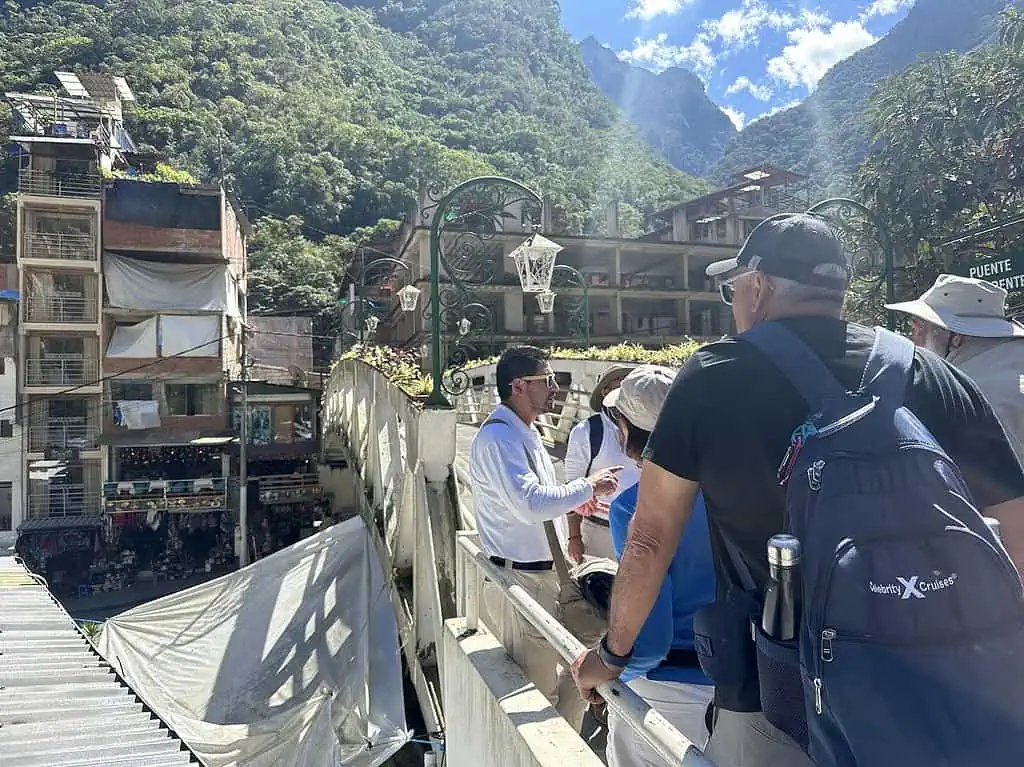

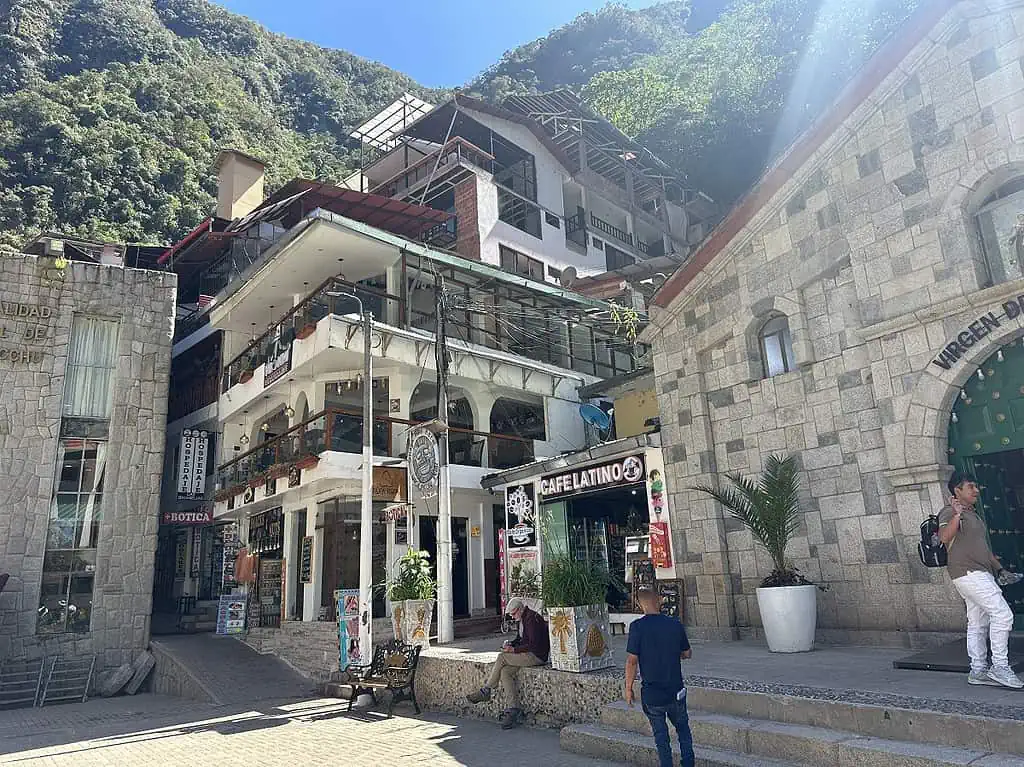
It is common for visitors to get to Aguas Calientes the day before their Machu Picchu reservation. People start lining up for the shuttle busses as early as 4:00 am. It’s only a 30-minute ride up the mountain, so if you are on the first bus and are lucky enough to have an entry time of 6:00 am, you will have an hour and a half wait.
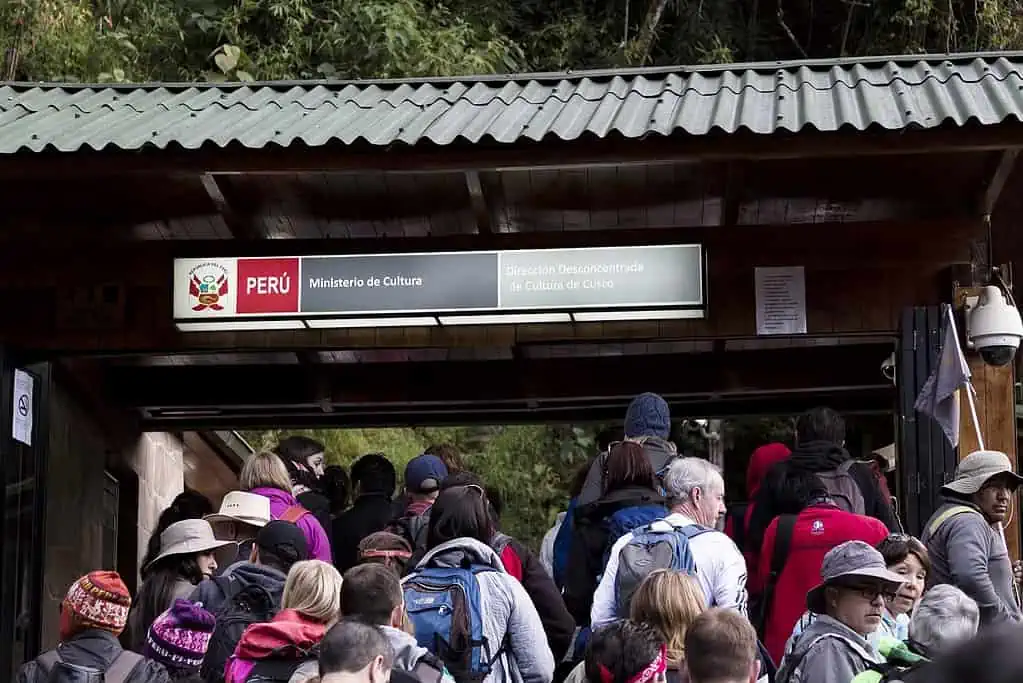
But at least you are in line; more people will be behind you shortly. This is because almost all tourists want to be the first ones into the park, hoping to see the sun rise over the famous and probably most photographed location in Machu Picchu.
It would help to remember that Machu Picchu is in a high-mountain tropical forest. This may not matter as much in the dry season (May – November). But It is common for the park to be covered in low fog in the rainy season. So you may wake up at 3 am only to spend several hours in the clouds waiting for a chance to see anything.
This is your once-in-a-lifetime bucket list visit to Machu Picchu. If you must have this mystical feeling view of the Citadel, get there early.
We took an easier path. Our reservation to enter the park was at noon.
From The Sacred Valley to Machu Picchu
After an early breakfast, we hop into our minibus for the ride to the train station at 7:10. We are taking the PeruRail Vistadome train from the Ollantaytambo station to Machu Picchu Pueblo that leaves at 8:30.
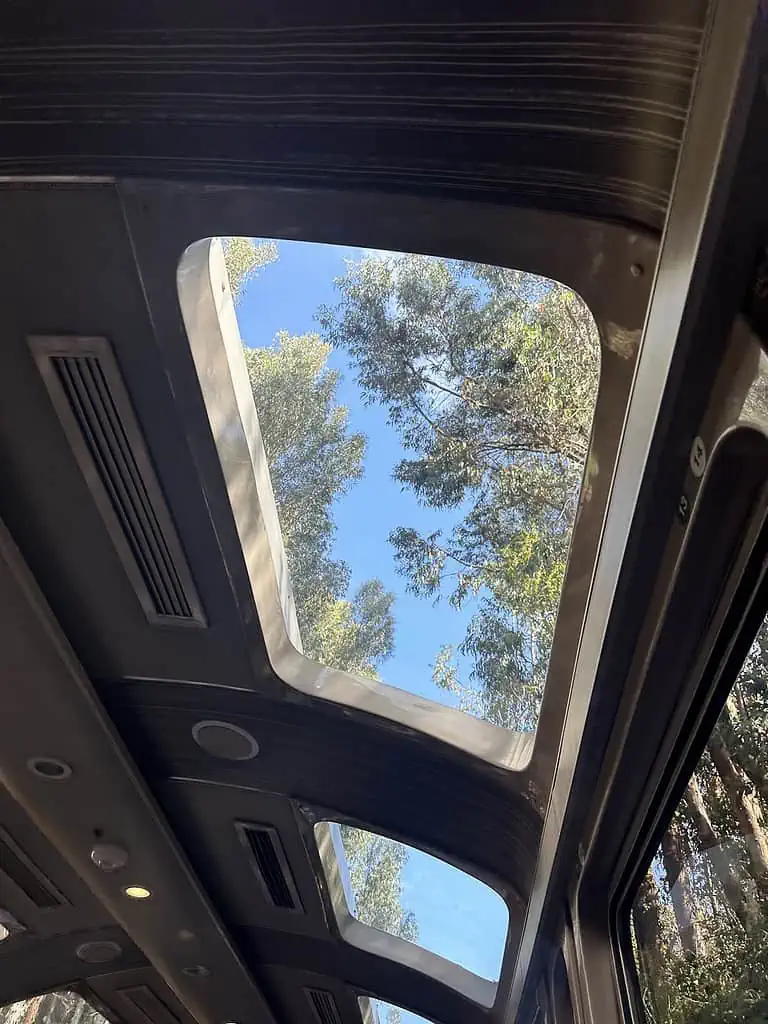
The Vistadome train car gives us a fantastic view of the landscape and mountains as we travel from the Sacred Valley floor along the Urubamba River to the snow-capped peaks of the mountains. At the beginning of the Inca Trail, we see groups of “sherpas” and travelers starting their 4-day hike.
The train ride takes around 2 hours; even so, when we reach Machu Picchu Town, there is still time to kill before we take the bus to the site. So Miguel and JC walk us through town. This is where you’ll find the bridge over the Vilcanota River, where almost every traveler takes a picture. Finally, we hop on the shuttle bus to the park and our lunch stop at Sanctuary Lodge. After lunch, we queue up for our entrance time to Machu Picchu.
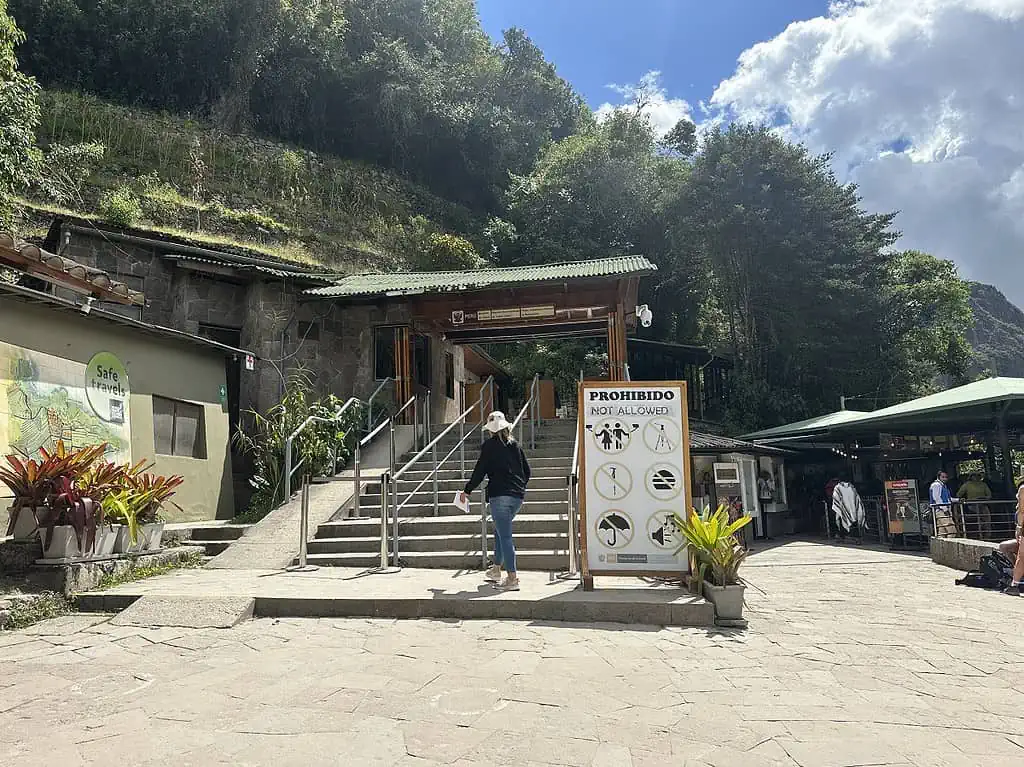
Important Note: Use the facilities and have your water bottle full before entering the site. At the time of our visit, there were no in-and-out privileges.
As we enter, the first thing Miguel asks is which circuit we wish to take. Everyone in the group has researched and is unanimous that we want to take Circuit 2. This trail leads you to a high point in the park for the most famous view of the Citadel. You can also reach this viewpoint on Circuit 1, but this circuit is an abbreviated portion of the park. On Circuit 2, you get the whole Machu Picchu tour.
Hiking Through Machu Picchu
Getting to the Panoramic overlook at the peak of Circuit 2 is the most challenging part of hiking through Machu Picchu. Now I understand why they say Ollantaytambo is the more strenuous hike. Not only is all of Ollantaytambo in direct sunlight, you start at the bottom and climb to the top.
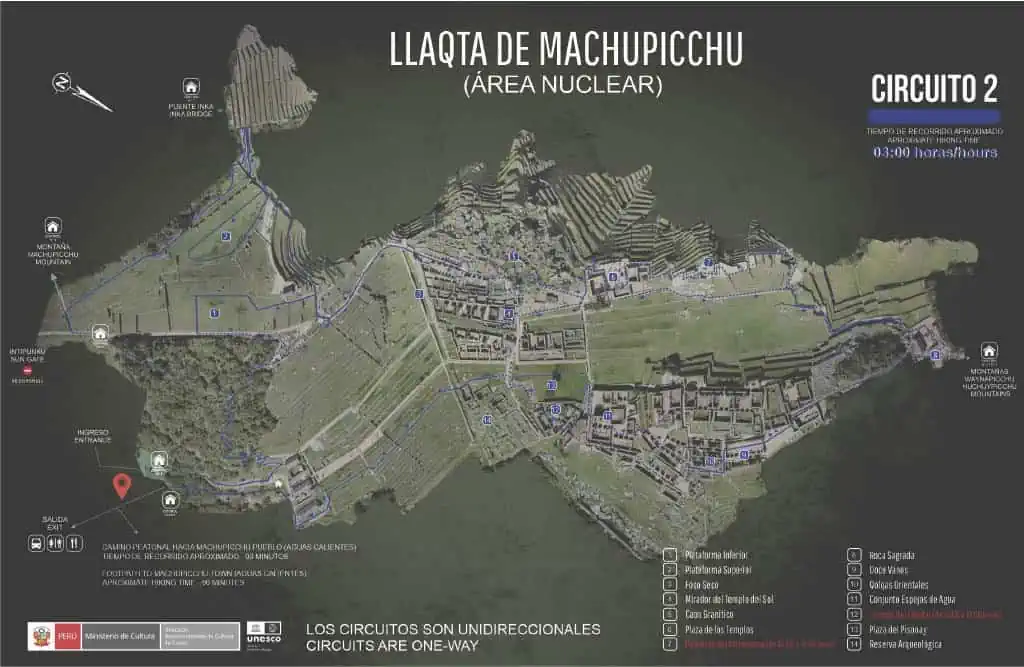
You are in a more temperate climate at Machu Picchu, and there is shade. The entrance to the site is located at about mid-elevation, so to get to the top of Circuit 2, you are only hiking up about half as far.
Even though fewer people are at the site due to the new regulations, this first part of the Machu Picchu tour is still the most crowded. This is the shot everyone wants; many people are taking more than one photo. Be patient and kind with others, and you will get your shot.
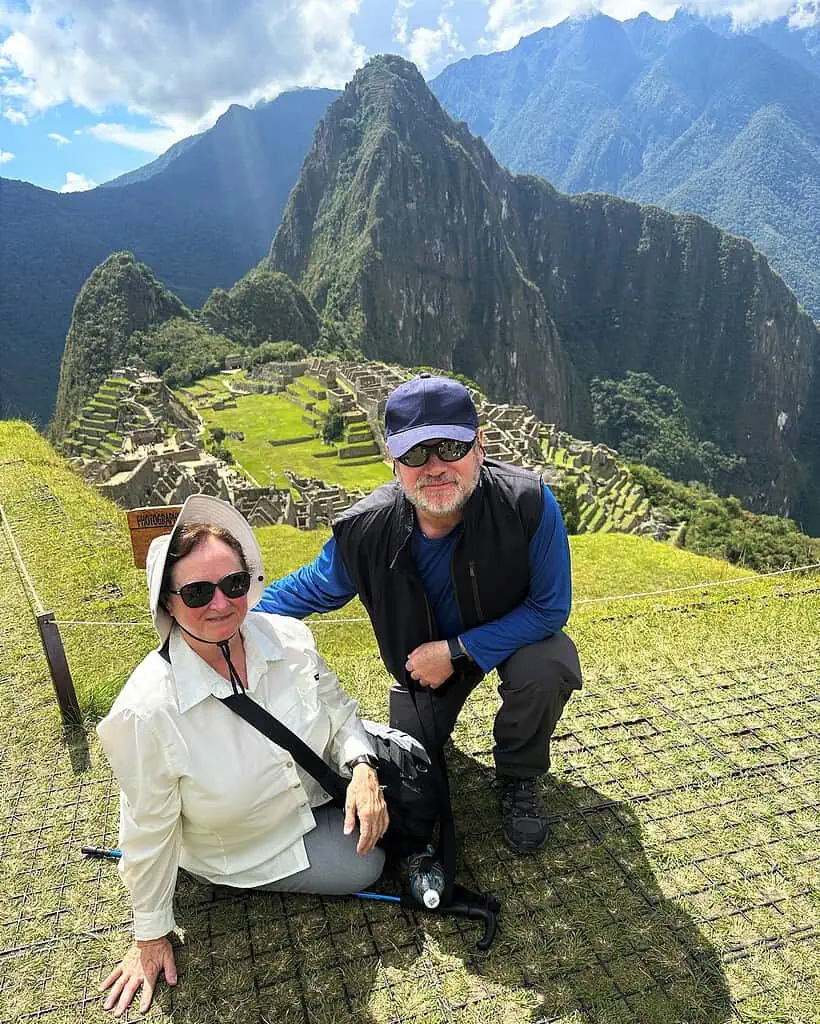
Yay, we got to the top and got the photo proof of our adventure despite one minor hold-up, where this young lady really wanted me to give her my walking stick. Now we head down through this great place to learn what is known about the construction and life in Machu Picchu during Inca times.
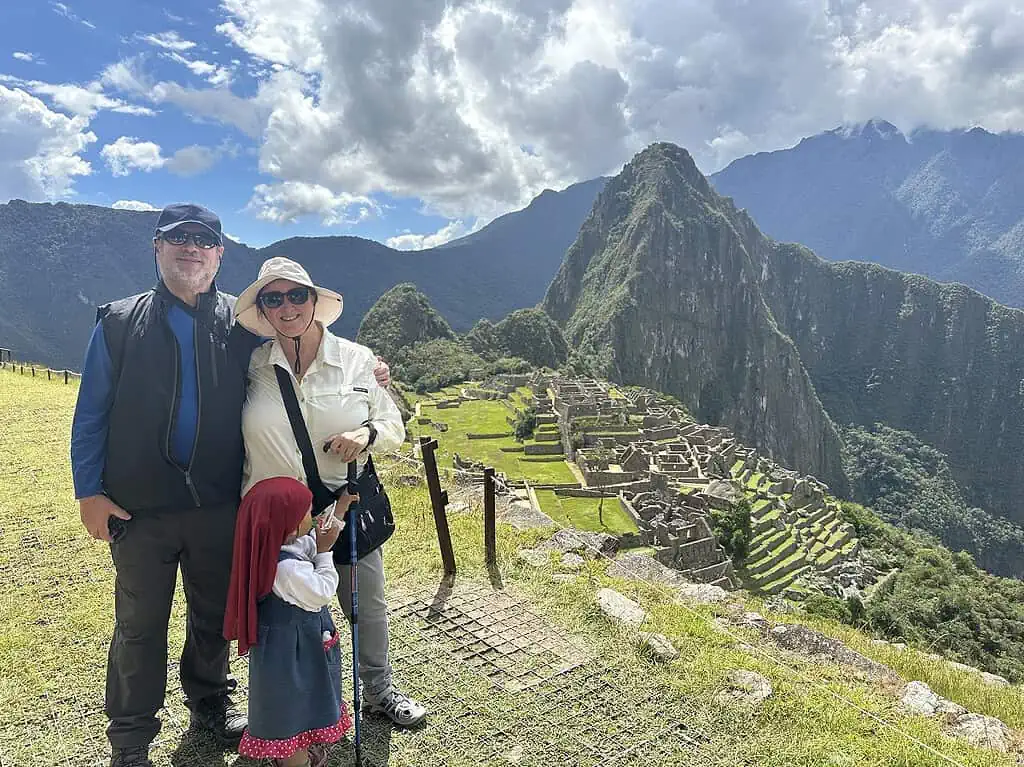
This high viewing point is a flat plain and was most likely one of the many agricultural terraces found throughout the site. Walking down to the city, you first see the tops of buildings with perfectly cut stones that would have supported thatched roofs back in the day. You get your first view of the Temple of the Sun from here.
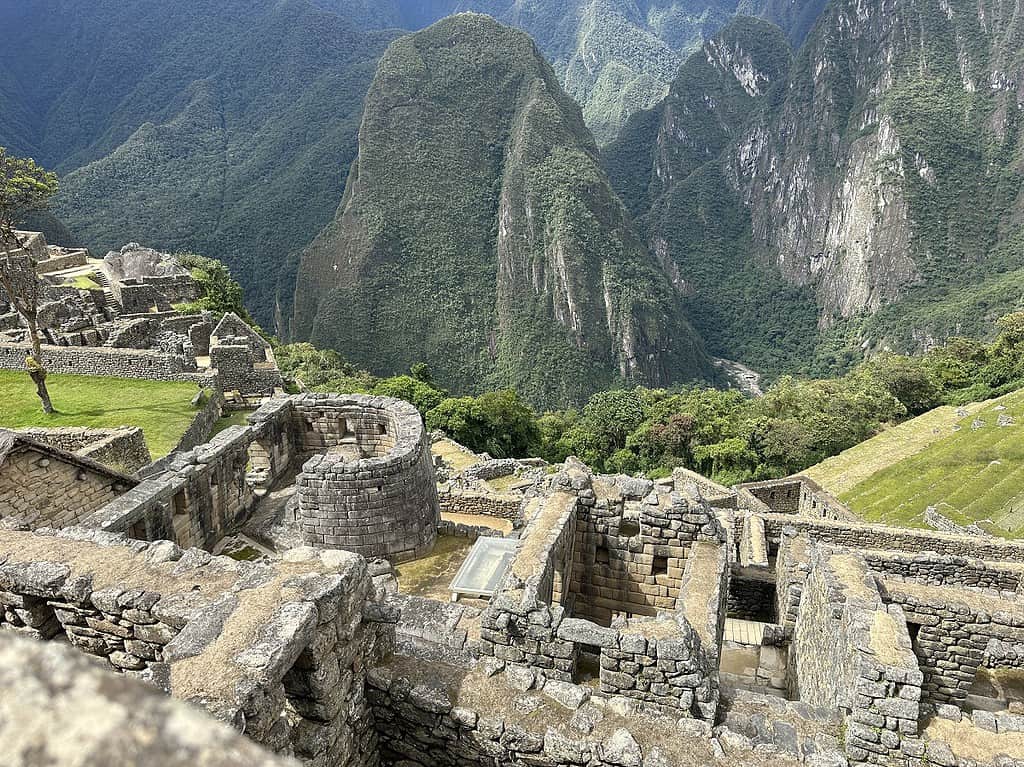
Just before the Plaza de los Templos, where you find the Temple of The Three Windows and the Temple of the Condor, Miguel points out Caos Granitoco, a large area of stones that are thought to be the quarry for some of the work done at Machu Picchu. There are even some partially cut but not finished stones where you can see how the intricate shaping was completed.
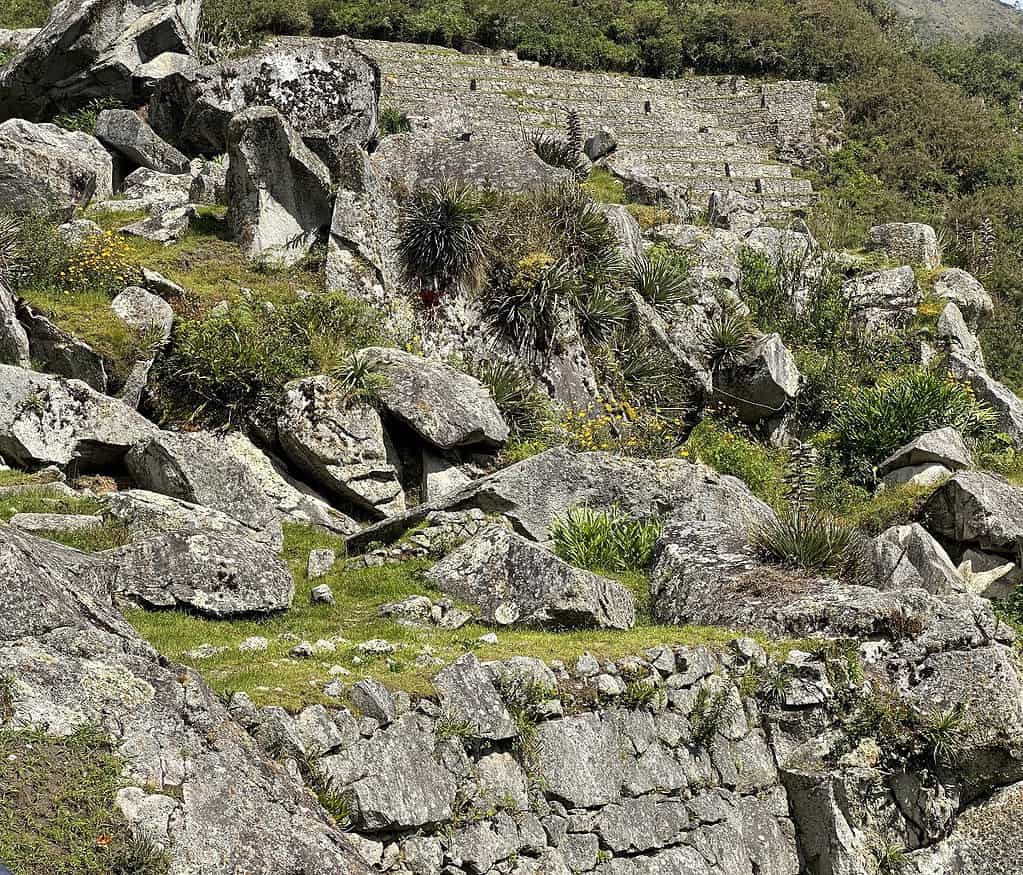

One of the sites that always amazes tourists is the Sacred Rock. This monolithic stone is 7 meters long at its base and 3 meters high. Again the level of craftsmanship in forming this stone and placing it in this location is unbelievable.
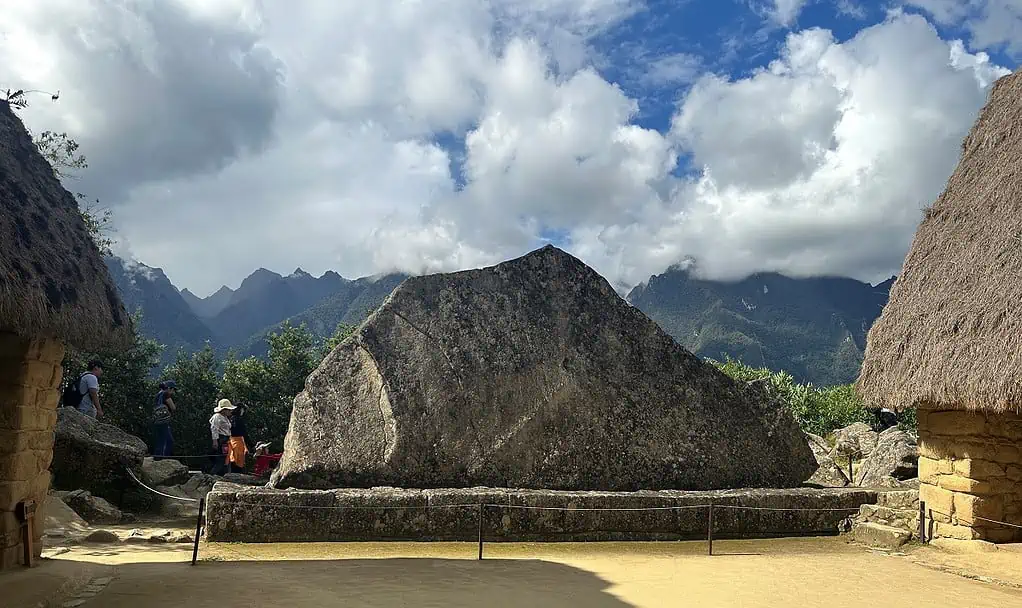
There is so much more to see and learn here in the Citadel. Our group continues to move along the old paths, through the open plains, and in and out of buildings, each more remarkable than the last. Finally, after about four hours in the park, our tour ended.
Taking the Hiram Bingham Train Back to Ollantaytambo
If you want a splurge, take the Hiram Bingham Train back to Ollantaytambo (or Cusco) like we did. When I say splurge, you should know this trip costs around $560 US per person one way. Why so expensive? Well, for a few reasons:
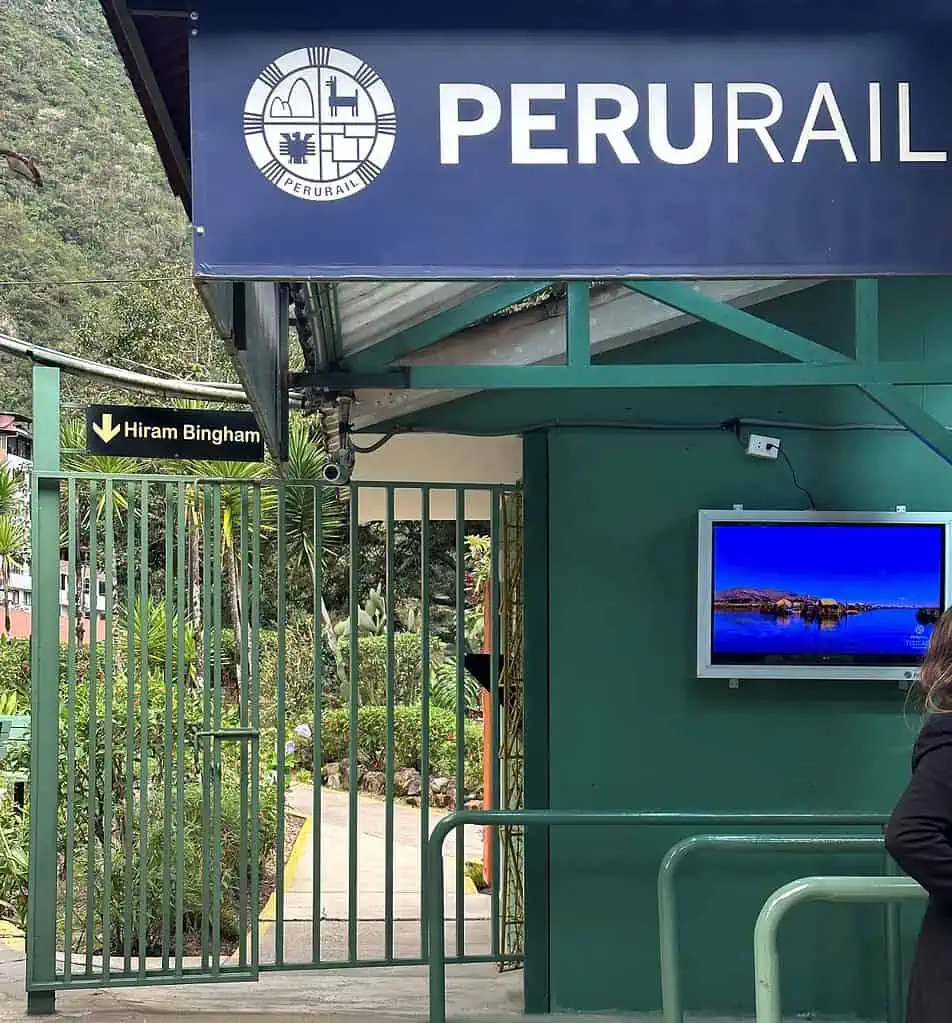
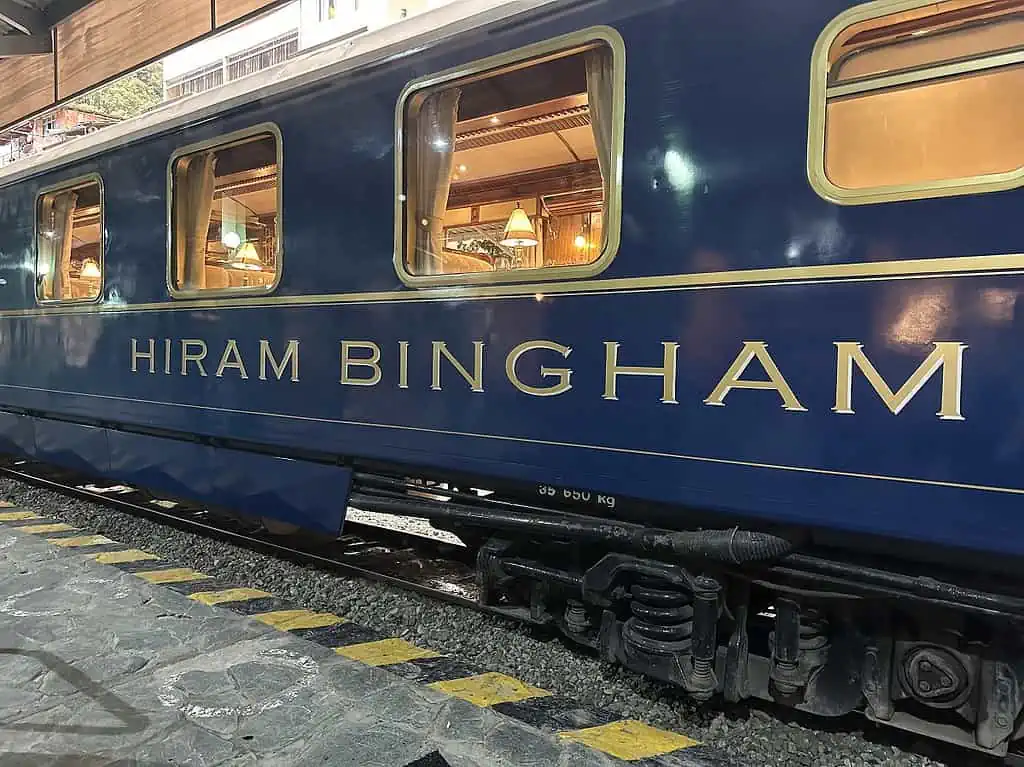
- This a classic train from the height of train travel with wood-paneled interiors and brass finishes that transports you back to the 1920s.
- While on the train, you are served a three-course Haute Cuisine dinner.
- Before dinner, guests are encouraged to enjoy the Club Car for drinks and entertainment.
- And all of this is included.
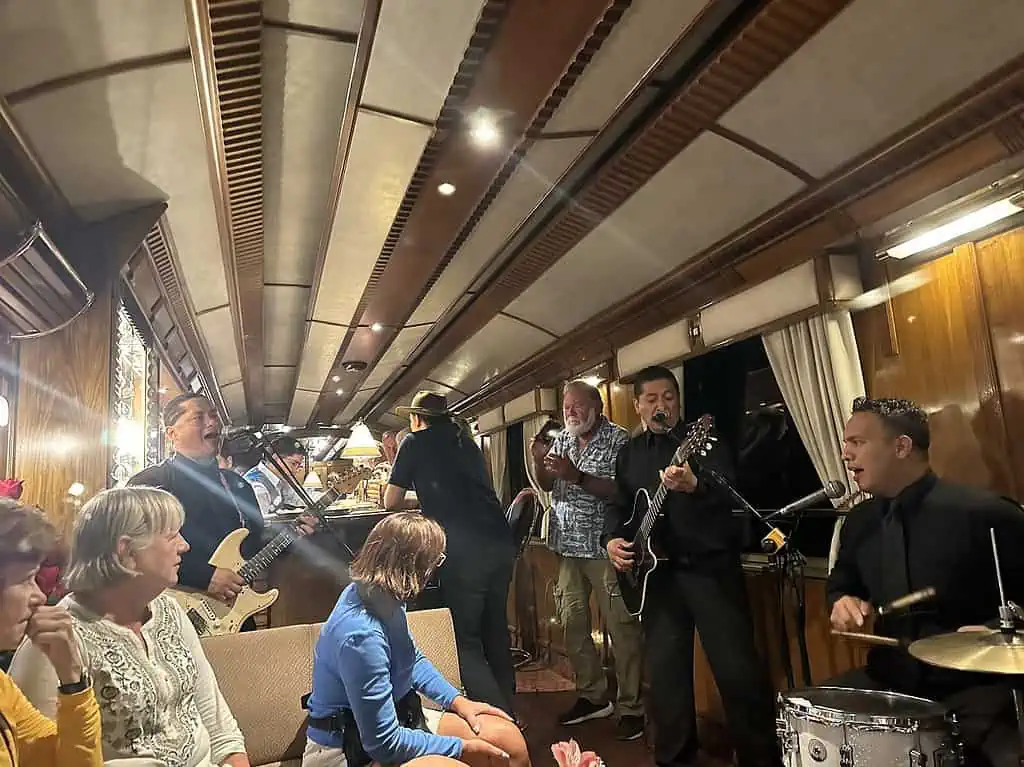
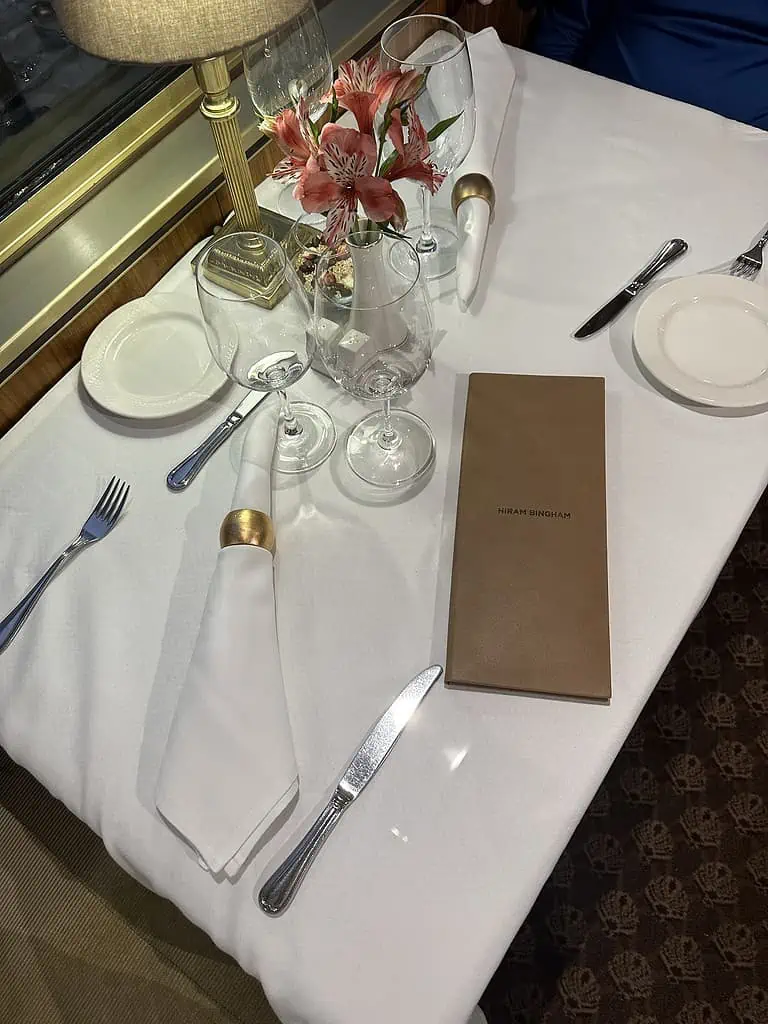
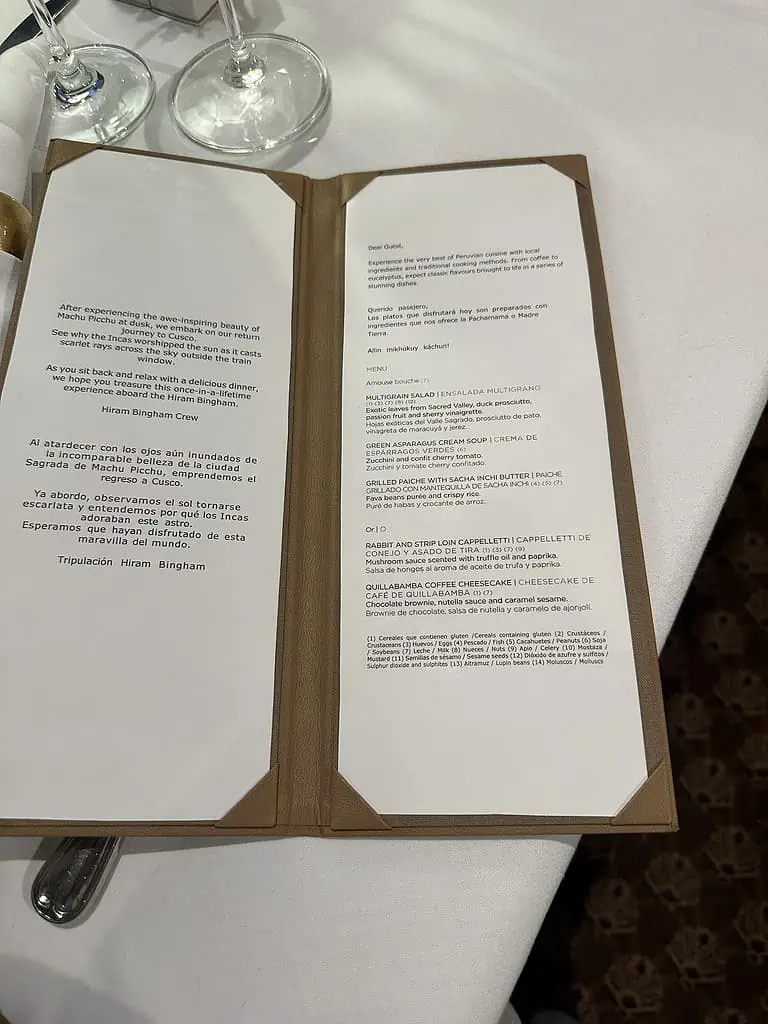

Note this train only runs to Cusco from May – December. January – April, the train only goes as far as Ollantaytambo.
Our time on the Hiram Bingham was a celebration of completing this once-in-a-lifetime trip. We sang all the great sing-along songs with the band and toasted each other’s accomplishments.
Leaving The Sacred Valley And Machu Picchu – Back To The City Of Cusco
Cusco, once the capital of the Inca Empire, has a rich history. We only have one short day here, but we fit a lot in. First, we head to Awana Kancha to learn how Peruvians have harvested, spun, and dyed wool from Llamas, Alpacas, and Vicunya for centuries. We also get the meet and feed these lovely animals at the farm on the site.
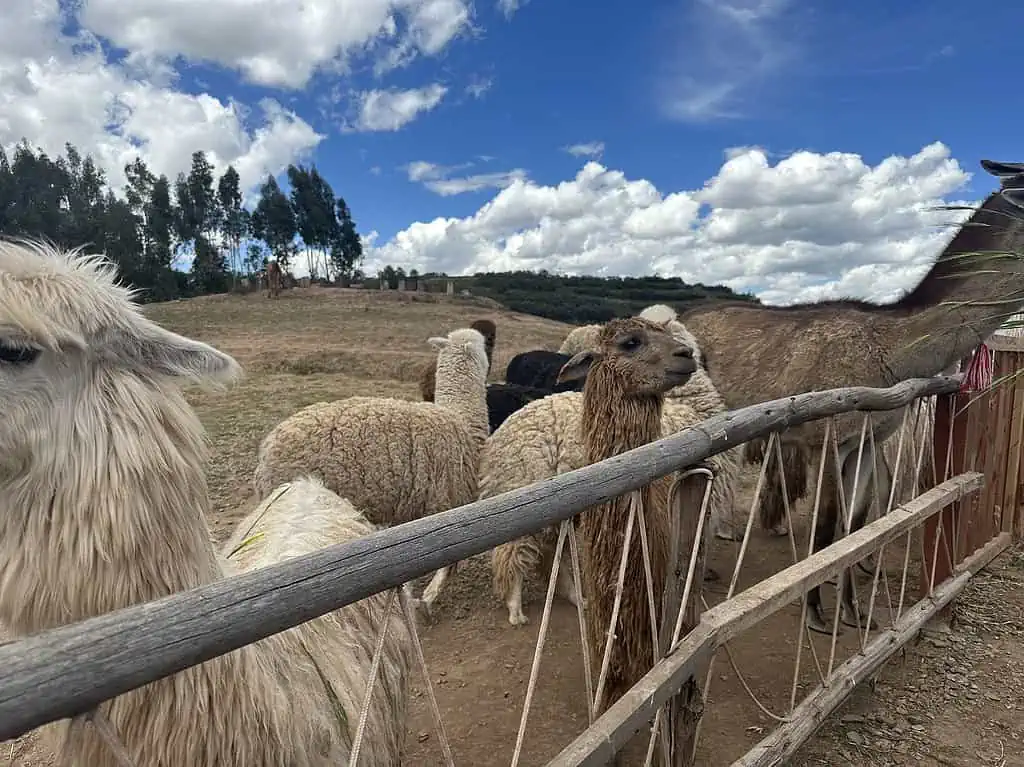
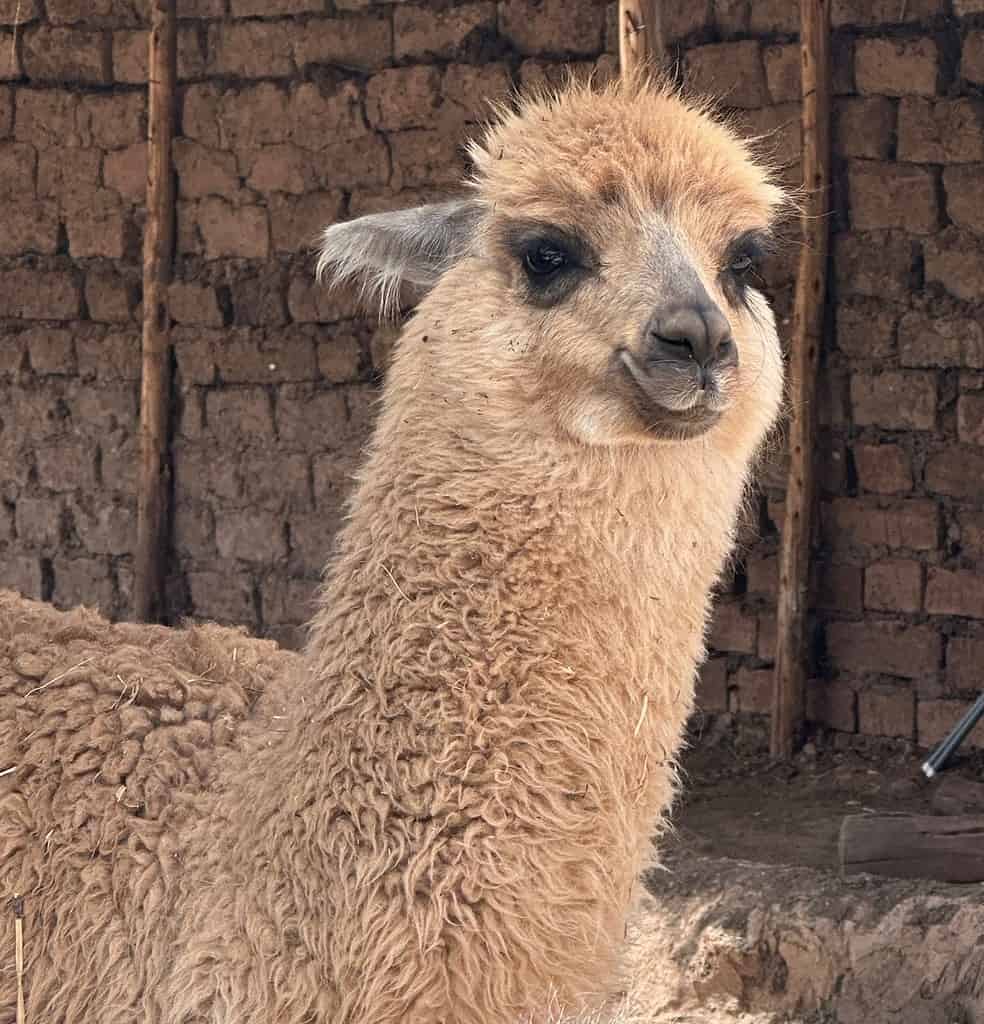
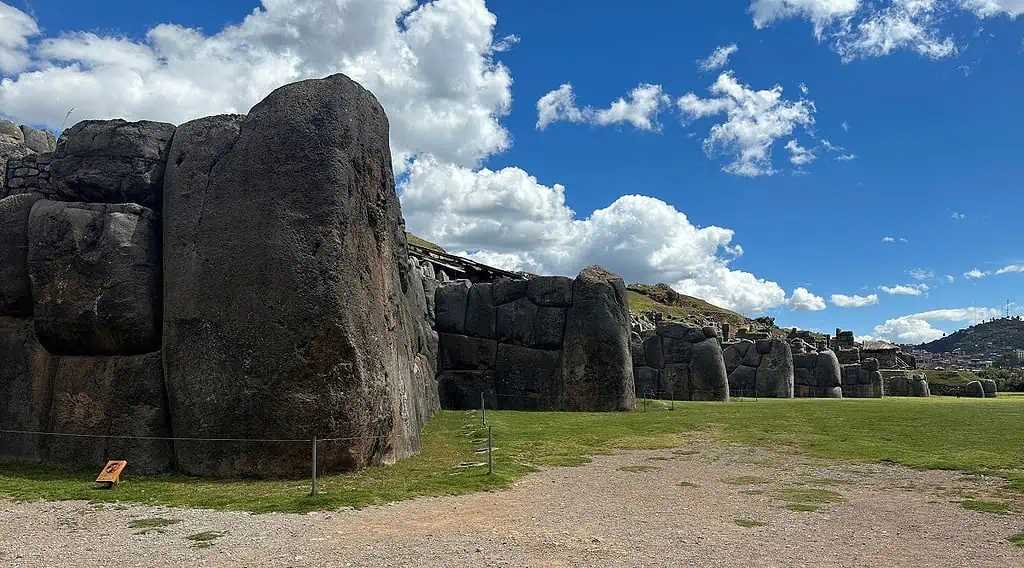
Next, we visit the Sacsayhuaman Fortress, another Incan archaeology site in the middle of Cusco. Lastly, we move on from Peruvian culture to the 16th century and see close up the Spanish influence on the region. In the Plaza de Armas, the main plaza in Cusco, we tour the stunning Cusco Cathedral.
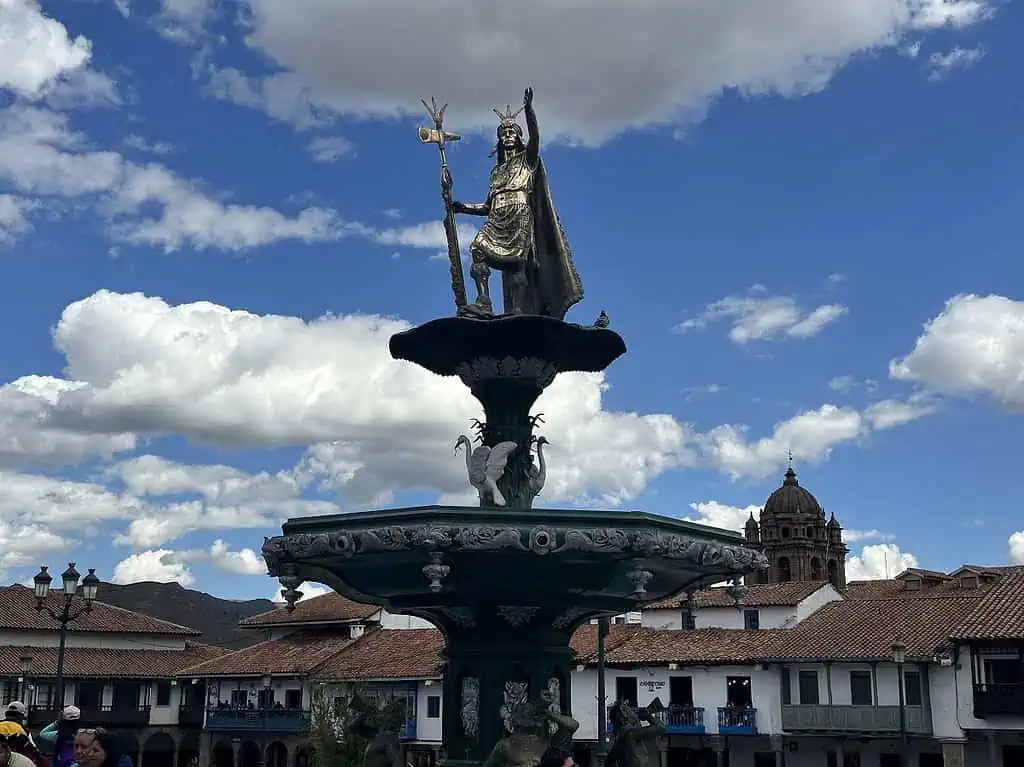
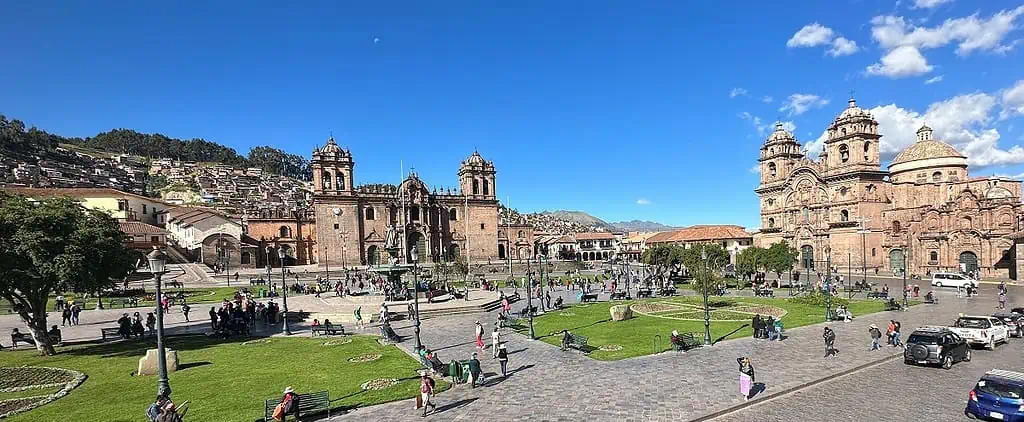
Our hotel for tonight is even a beautiful piece of history. Hotel Monasterio is a former monastery dating back to 1592. The group gathers in the restaurant in the hotel courtyard for our last dinner together and reminisces about the wonderful week we just had.
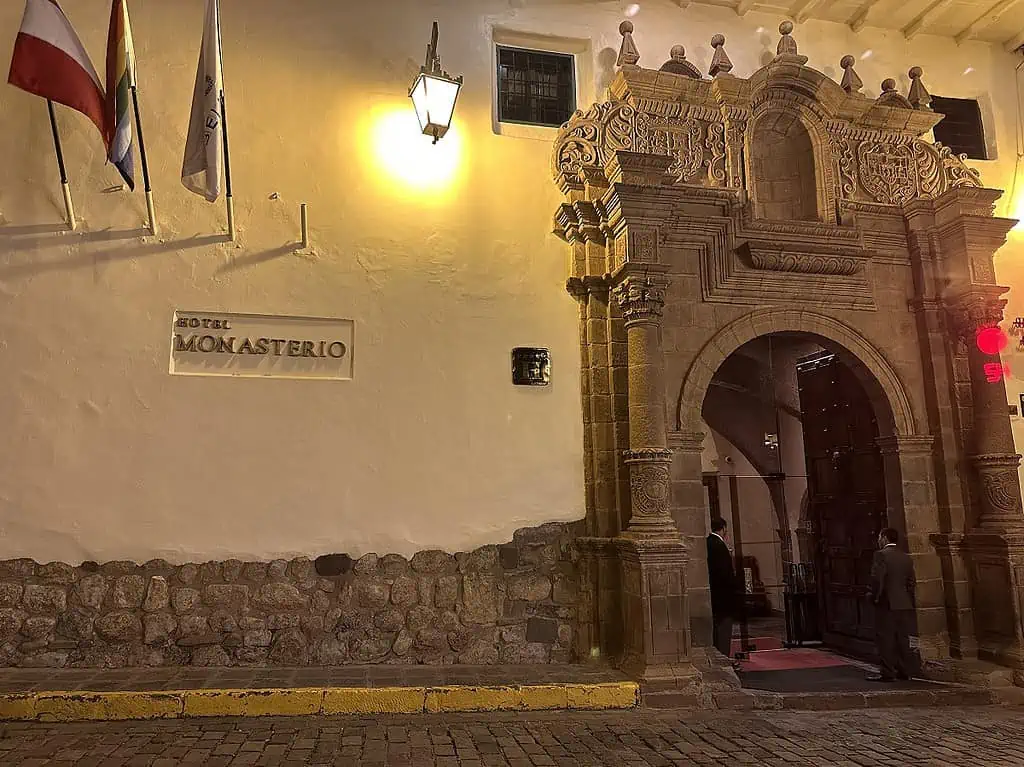
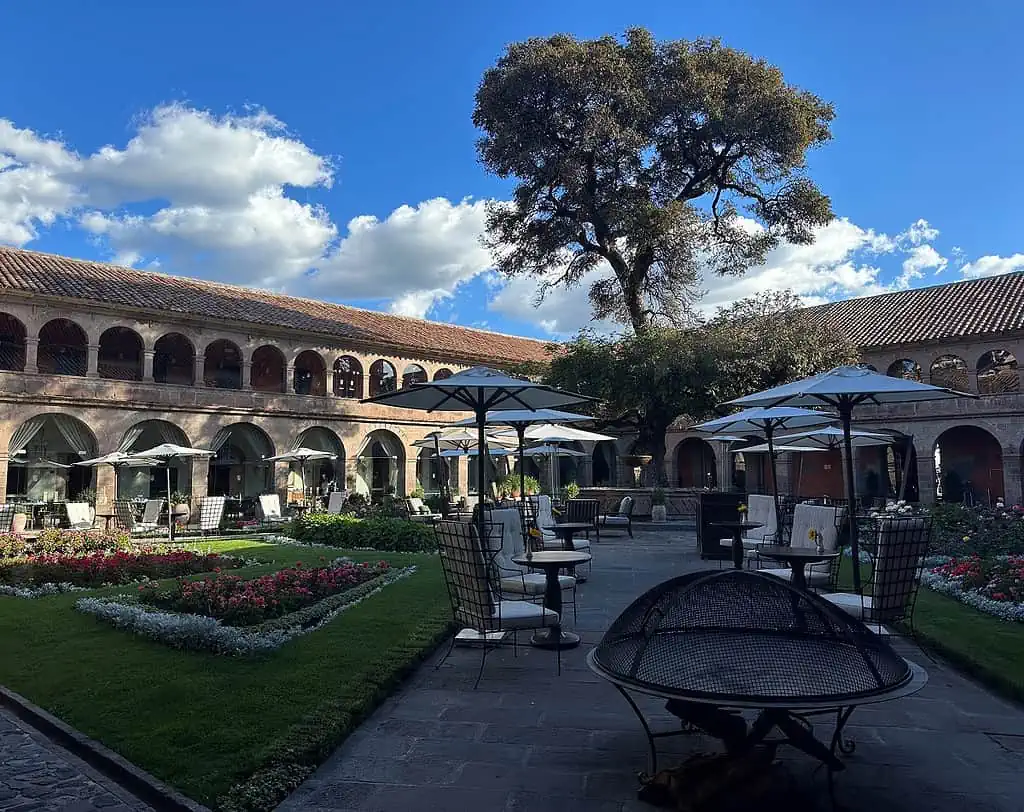
Are You Ready to Set Out On Your Best Tour Of The Sacred Valley and Machu Picchu?
Plan your trip well, especially for hiking permits and train tickets. The Sacred Valley and Machu Picchu offer a unique blend of natural beauty, archaeological wonders, and cultural immersion that will leave you with unforgettable memories. Enjoy your journey through this mystical region of
FAQs About The Sacred Valley And Machu Picchu
Do You Need Travel Insurance?
While travel insurance is not a requirement to visit Machu Picchu and The Sacred Valley, it is highly recommended. We like AXA travel Insurance as it offers a broad range of coverages and competitive prices.
Before purchasing travel insurance, carefully review the policy coverage, exclusions, and pre-existing condition limitations. Make sure it meets your specific needs and covers activities such as hiking or trekking, which are common in Machu Picchu and The Sacred Valley.
What Type Of Clothing Is Best For the Sacred Valley and Machu Picchu
The weather in the region can be unpredictable, so dressing in layers is critical. Mornings and evenings can be cool, while afternoons can be warm. A lightweight waterproof, windproof jacket or rain poncho may be handy.
You may be tempted to wear short sleeves or short pants in the dry month as it can be pretty warm. But I recommend long sleeves and pants as the best way to dress for the hikes. These items will protect from the powerful sun (clothing with SPF is an easy way to avoid sunburn) and flying, biting bugs. Here are the items I found most comfortable.
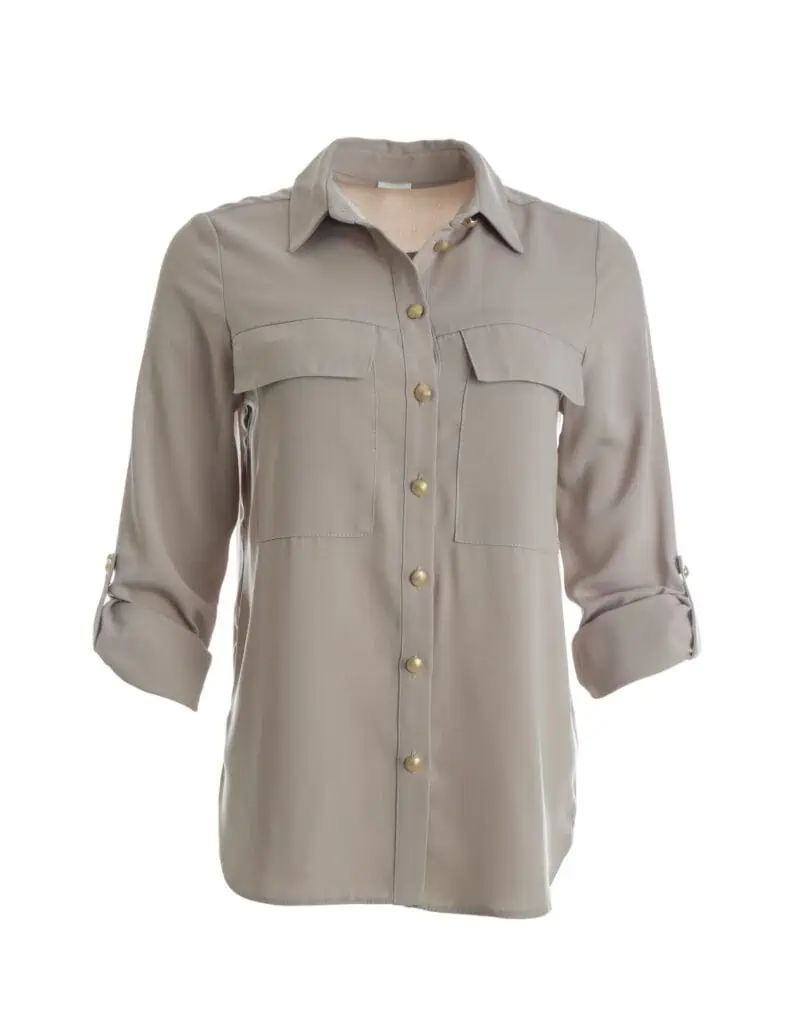
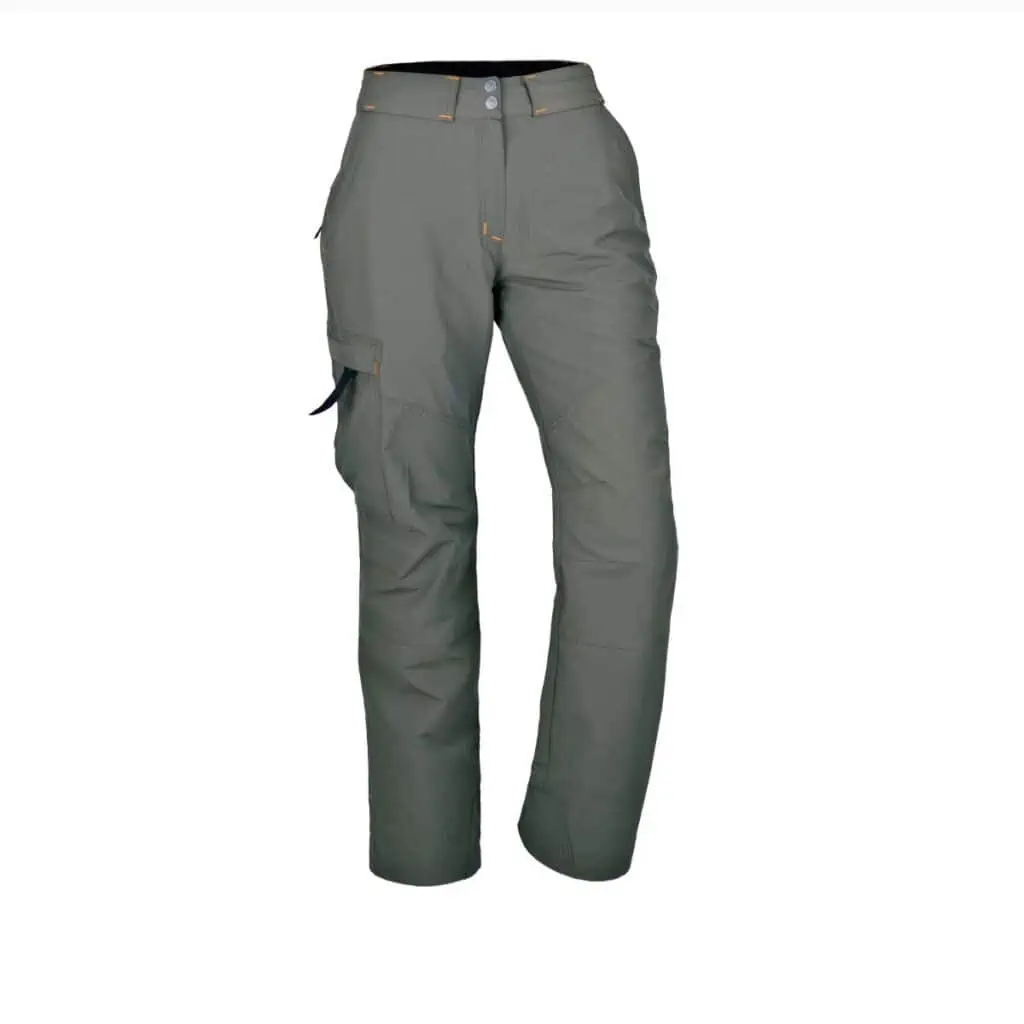
A good pair of hiking shoes or boots are essential. My favorite purchase this year has been these Merrells. They are waterproof, have excellent traction, and are incredibly comfortable.

Wear a wide-brimmed hat with a neck strap to protect yourself from the strong Andean sun. Sunglasses with UV protection are also essential to shield your eyes.
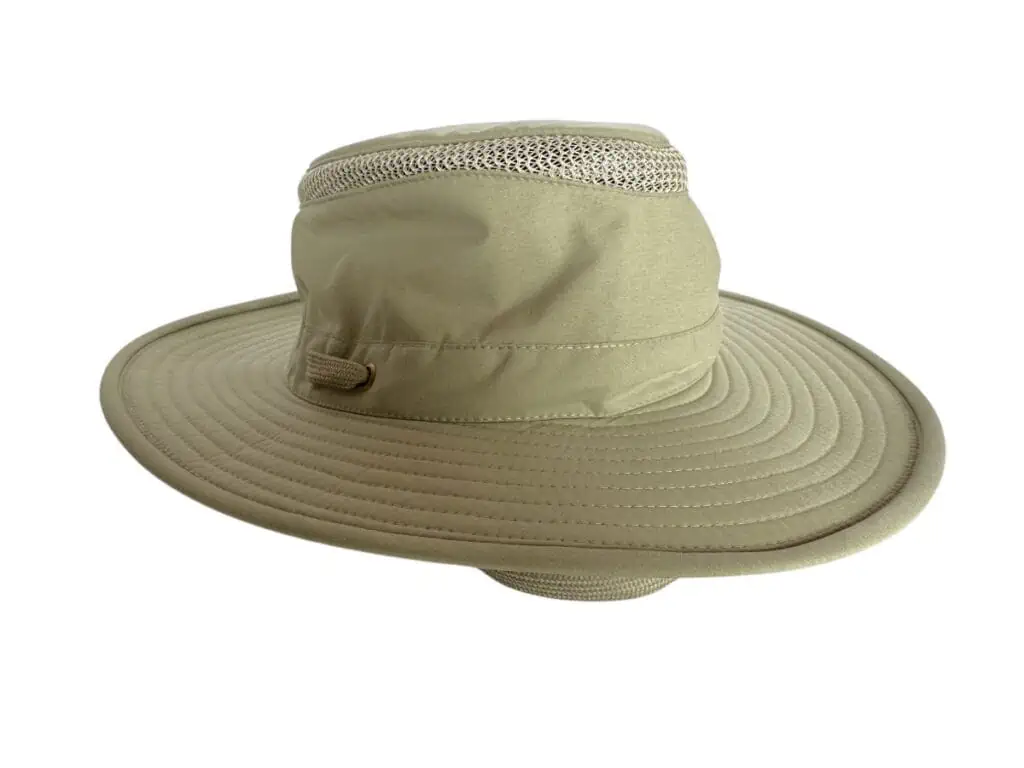
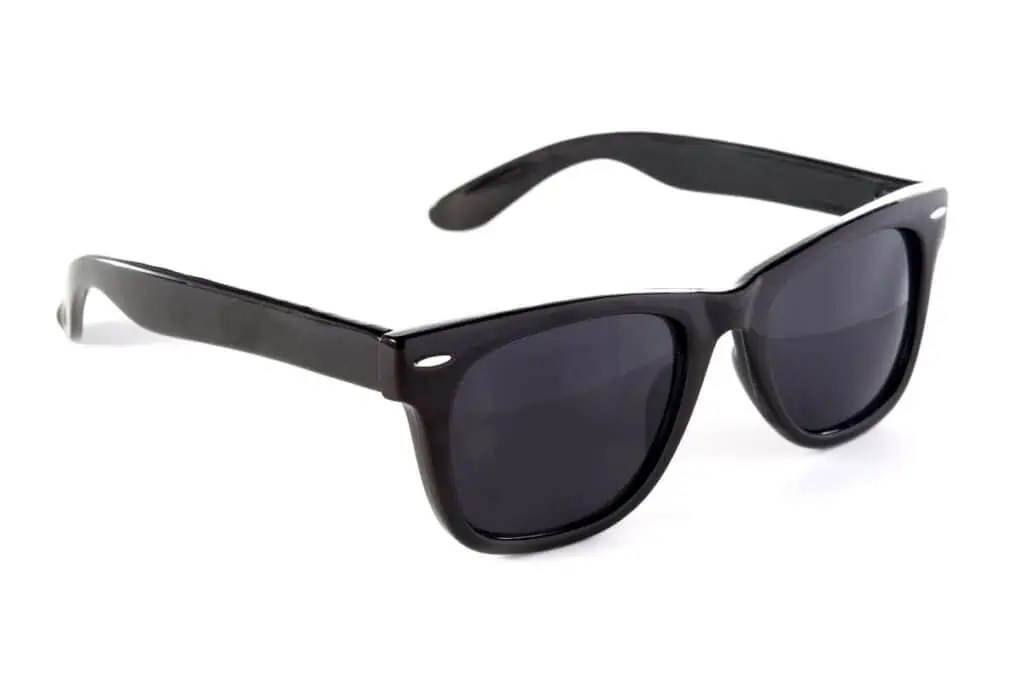
Remember to check the weather forecast before your trip and be prepared for changes in temperature and precipitation. It’s better to be overprepared with layers that can be easily adjusted than to be caught unprepared for changing weather conditions.

